RRID: AB_10013382
DOI: 10.http://www.molvis.org/molvis/v23/963
Resource: (Agilent Cat# Z0334, RRID:AB_10013382)
Curator: @ethanbadger
SciCrunch record: RRID:AB_10013382
RRID: AB_10013382
DOI: 10.http://www.molvis.org/molvis/v23/963
Resource: (Agilent Cat# Z0334, RRID:AB_10013382)
Curator: @ethanbadger
SciCrunch record: RRID:AB_10013382
RRID: AB_448151
DOI: 10.http://www.molvis.org/molvis/v23/963
Resource: (Abcam Cat# ab24574, RRID:AB_448151)
Curator: @ethanbadger
SciCrunch record: RRID:AB_448151
RRID: AB_11016938
DOI: 10.http://www.molvis.org/molvis/v23/963
Resource: (Novus Cat# NBP1-80642, RRID:AB_11016938)
Curator: @ethanbadger
SciCrunch record: RRID:AB_11016938
RRID: AB_1141557
DOI: 10.http://www.molvis.org/molvis/v23/963
Resource: (Abcam Cat# ab31630, RRID:AB_1141557)
Curator: @ethanbadger
SciCrunch record: RRID:AB_1141557
RRID: AB_839504
DOI: 10.http://www.molvis.org/molvis/v23/963
Resource: (Wako Cat# 019-19741, RRID:AB_839504)
Curator: @ethanbadger
SciCrunch record: RRID:AB_839504
RRID: AB_630987
DOI: 10.http://www.molvis.org/molvis/v23/963
Resource: (Santa Cruz Biotechnology Cat# sc-1225, RRID:AB_630987)
Curator: @ethanbadger
SciCrunch record: RRID:AB_630987
RRID: AB_630987
DOI: 10.http://www.molvis.org/molvis/v23/963
Resource: (Santa Cruz Biotechnology Cat# sc-1225, RRID:AB_630987)
Curator: @ethanbadger
SciCrunch record: RRID:AB_630987
RRID: AB_91789
DOI: 10.http://www.molvis.org/molvis/v23/963
Resource: (Millipore Cat# AB5320, RRID:AB_91789)
Curator: @ethanbadger
SciCrunch record: RRID:AB_91789
RRID: AB_91789
DOI: 10.http://www.molvis.org/molvis/v23/963
Resource: (Millipore Cat# AB5320, RRID:AB_91789)
Curator: @ethanbadger
SciCrunch record: RRID:AB_91789
RRID: AB_1841021
DOI: 10.http://www.molvis.org/molvis/v23/963
Resource: (Sigma-Aldrich Cat# M3821, RRID:AB_1841021)
Curator: @ethanbadger
SciCrunch record: RRID:AB_1841021
a
DOI: 10.26508/lsa.202101342
Resource: RRID:BDSC_33473
Curator: @areedewitt04
SciCrunch record: RRID:BDSC_33473
f
DOI: 10.26508/lsa.202101342
Resource: RRID:BDSC_11089
Curator: @areedewitt04
SciCrunch record: RRID:BDSC_11089
r
DOI: 10.26508/lsa.202101342
Resource: (Innovative Research Cat# ab290, RRID:AB_2313768)
Curator: @areedewitt04
SciCrunch record: RRID:AB_2313768
e
DOI: 10.26508/lsa.202101342
Resource: RRID:BDSC_27390
Curator: @areedewitt04
SciCrunch record: RRID:BDSC_27390
t
DOI: 10.26508/lsa.202101342
Resource: RRID:BDSC_32476
Curator: @areedewitt04
SciCrunch record: RRID:BDSC_32476
l
DOI: 10.26508/lsa.202101342
Resource: RRID:BDSC_76159
Curator: @areedewitt04
SciCrunch record: RRID:BDSC_76159
o
DOI: 10.26508/lsa.202101342
Resource: RRID:BDSC_31539
Curator: @areedewitt04
SciCrunch record: RRID:BDSC_31539
u
DOI: 10.26508/lsa.202101342
Resource: (Sigma-Aldrich Cat# T5168, RRID:AB_477579)
Curator: @areedewitt04
SciCrunch record: RRID:AB_477579
r
DOI: 10.26508/lsa.202101342
Resource: RRID:BDSC_4414
Curator: @areedewitt04
SciCrunch record: RRID:BDSC_4414
T
DOI: 10.26508/lsa.202101342
Resource: (Bio-Rad Cat# 170-6515, RRID:AB_11125142)
Curator: @areedewitt04
SciCrunch record: RRID:AB_11125142
e
DOI: 10.26508/lsa.202101342
Resource: RRID:BDSC_22178
Curator: @areedewitt04
SciCrunch record: RRID:BDSC_22178
y
DOI: 10.26508/lsa.202101342
Resource: RRID:BDSC_25756
Curator: @areedewitt04
SciCrunch record: RRID:BDSC_25756
o
DOI: 10.26508/lsa.202101342
Resource: (DSHB Cat# adl67.10, RRID:AB_528336)
Curator: @areedewitt04
SciCrunch record: RRID:AB_528336
s
DOI: 10.26508/lsa.202101342
Resource: (Thermo Fisher Scientific Cat# A-21236, RRID:AB_2535805)
Curator: @areedewitt04
SciCrunch record: RRID:AB_2535805
k
DOI: 10.26508/lsa.202101342
Resource: RRID:BDSC_3605
Curator: @areedewitt04
SciCrunch record: RRID:BDSC_3605
e
DOI: 10.26508/lsa.202101342
Resource: RRID:BDSC_7019
Curator: @areedewitt04
SciCrunch record: RRID:BDSC_7019
s
DOI: 10.26508/lsa.202101342
Resource: (Sigma-Aldrich Cat# P1951, RRID:AB_2315148)
Curator: @areedewitt04
SciCrunch record: RRID:AB_2315148
e
DOI: 10.26508/lsa.202101342
Resource: (Molecular Probes Cat# A-11006, RRID:AB_141373)
Curator: @areedewitt04
SciCrunch record: RRID:AB_141373
e
DOI: 10.26508/lsa.202101342
Resource: RRID:Addgene_43986
Curator: @areedewitt04
SciCrunch record: RRID:Addgene_43986
c
DOI: 10.26508/lsa.202101342
Resource: (DSHB Cat# DSHB-GFP-12A6, RRID:AB_2617417)
Curator: @areedewitt04
SciCrunch record: RRID:AB_2617417
l
DOI: 10.26508/lsa.202101342
Resource: RRID:Addgene_60949
Curator: @areedewitt04
SciCrunch record: RRID:Addgene_60949
b
DOI: 10.26508/lsa.202101342
Resource: RRID:Addgene_60948
Curator: @areedewitt04
SciCrunch record: RRID:Addgene_60948
b
DOI: 10.26508/lsa.202101342
Resource: RRID:BDSC_29715
Curator: @areedewitt04
SciCrunch record: RRID:BDSC_29715
a
DOI: 10.26508/lsa.202101342
Resource: RRID:Addgene_60944
Curator: @areedewitt04
SciCrunch record: RRID:Addgene_60944
As a student and literary scholar in training, you have the power to influence culture through your reading and analysis of literature!
meaning
Part of what makes analyzing literature so fun is that it means the definition of literature is always up for debate! This is especially important given the history of the canon.
great value when we recall what is literature means
monohybrid cross




A monohybrid cross is a genetic cross that examines inheritance of ONE trait only between two parents.
Mono = one Hybrid = genetic cross
So:
Monohybrid cross = a cross involving one trait
The single trait must have two contrasting forms, such as:
Each trait is controlled by one gene with two alleles.
A monohybrid cross is usually shown using a 2 × 2 Punnett square.
Example:
Parents: Tt × Tt
Possible offspring genotypes:
Genotype ratio
Phenotype ratio
📌 This 3:1 phenotype ratio is a classic result of a monohybrid cross involving complete dominance.
Monohybrid crosses help students:
They were essential in Mendel’s experiments with pea plants.
Use a monohybrid cross when:
A monohybrid cross studies the inheritance of a single trait using one gene and two alleles.
单性状杂交是指: 只研究一个性状遗传情况的杂交实验。
mono(单) + hybrid(杂交)
该性状通常:
通常使用 2×2 潘尼特方格。
例子:
父母:Tt × Tt
后代基因型:
基因型比例
表现型比例
📌 这是孟德尔单性状杂交的经典结果。
单性状杂交是研究一个性状遗传规律的杂交实验。
如果你愿意,我可以把 monohybrid vs dihybrid cross 整理成 Science 10 中英对照对比表、练习题或互动 Punnett 方格,非常适合系统复习。
gamete


A gamete is a sex cell used in sexual reproduction. Gametes carry half the normal number of chromosomes and combine during fertilization to form a new organism.
Gamete = a reproductive cell with half the chromosomes
There are two main types:
Each parent contributes one gamete to the offspring.
Gametes are haploid (n), meaning they contain half the usual chromosome number.
Example (humans):
📌 This ensures that when fertilization occurs, the offspring has the correct chromosome number.
Gametes are produced by meiosis, a special type of cell division.
Meiosis:
During fertilization:
Gametes:
A gamete is a haploid sex cell (sperm or egg) that combines with another during fertilization.
配子(gamete)是用于有性生殖的细胞,只含有一半的染色体数目。
配子 = 含一半染色体的生殖细胞
每个亲本提供 一个配子。
配子是 单倍体(n):
配子通过 减数分裂产生:
配子是含有一半染色体数的生殖细胞,用于有性生殖。
如果你愿意,我可以把 gamete → meiosis → fertilization → zygote 整理成 Science 10 中英对照流程图或互动闪卡,非常适合系统复习与教学。
self-pollinate.



To self-pollinate means that a plant’s pollen fertilizes its own ovules. The pollen comes from the same flower or from another flower on the same plant.
Self-pollinate = a plant fertilizes itself
In flowering plants:
No wind, insects, or animals are required.
Self-pollination is useful because it:
This is why self-pollinating plants are often used in genetics studies.
Pea plants naturally self-pollinate because:
This allows plants to produce offspring with very similar genotypes.
| Feature | Self-pollination | Cross-pollination | | ---------------------- | ---------------- | ----------------- | | Pollen source | Same plant | Different plant | | Genetic variation | Low | High | | Offspring | Very similar | More diverse | | Depends on pollinators | No | Often yes |
📌 Self-pollination increases genetic consistency, while cross-pollination increases variation.
Advantages
Disadvantages
Self-pollination occurs when a plant’s pollen fertilizes ovules on the same plant, producing genetically similar offspring.
自花授粉是指: 花粉来自同一朵花或同一株植物,并完成受精过程。
自花授粉 = 植物自己给自己授粉
不需要昆虫或风的帮助。
| 类型 | 特点 | | ---- | ------ | | 自花授粉 | 遗传多样性低 | | 异花授粉 | 遗传多样性高 |
自花授粉是指植物利用自身花粉完成受精的过程。
如果你愿意,我可以把 self-pollination → cross-pollination → genetic variation 整理成 Science 10 中英对照图解或互动练习题,非常适合课堂与考试复习。
pea


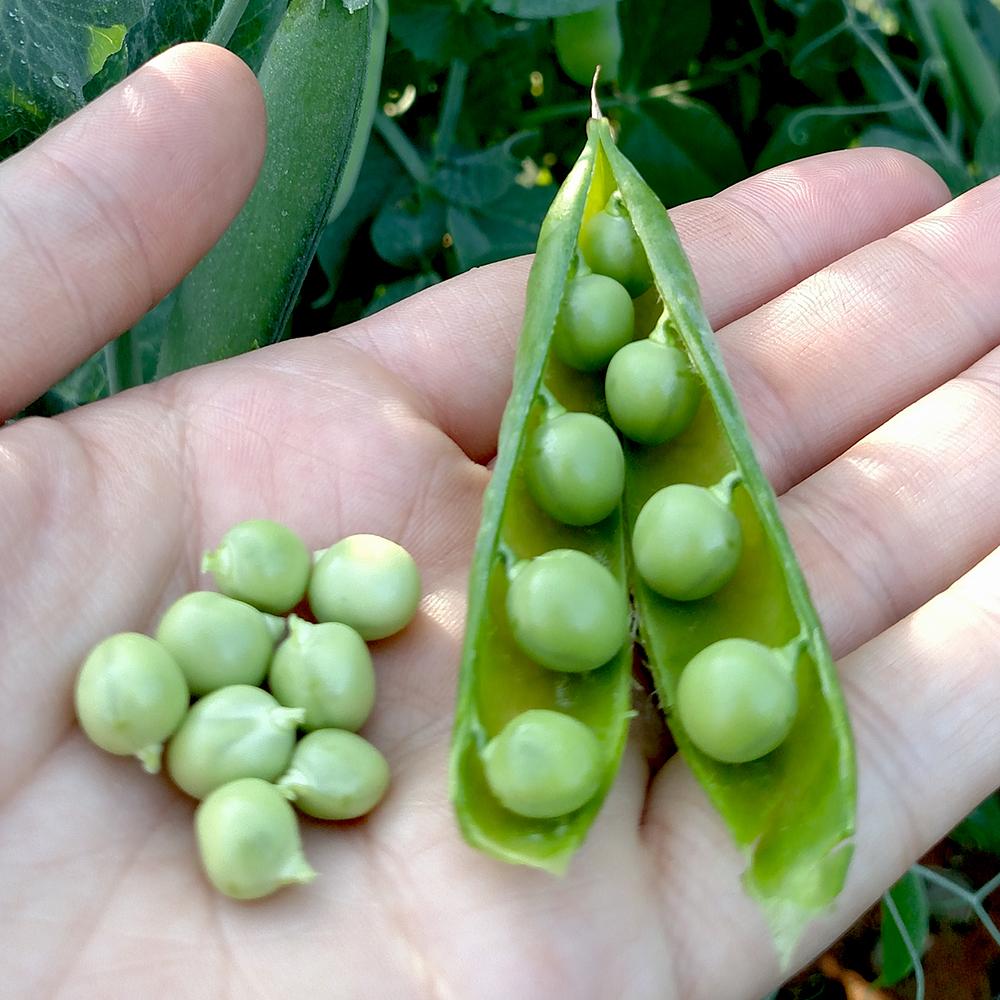
A pea is the small, round seed found inside a pea pod, produced by the pea plant. Peas are both a food crop and a classic model organism in genetics.
Pea = a seed from a pea plant; widely used to study inheritance
Pea plants were used by Gregor Mendel to discover the basic laws of inheritance.
Why peas were ideal:
Mendel studied traits with two clear forms, such as:
| Trait | One form | Other form | | ------------ | -------- | ----------- | | Seed shape | Round | Wrinkled | | Seed color | Yellow | Green | | Flower color | Purple | White | | Pod shape | Inflated | Constricted | | Plant height | Tall | Short |
These traits made it easy to observe dominant and recessive patterns.
Pea traits are often used in Punnett square problems.
Example:
Cross: Rr × Rr
Results:
Peas helped scientists understand:
These principles apply to all sexually reproducing organisms, including humans.
Peas are seed plants used by Mendel to discover inheritance patterns because they have clear, contrasting traits.
豌豆(pea)是豌豆植物果荚中的种子,既是食物,也是遗传学研究中的经典材料。
豌豆 = 常用于研究遗传规律的植物种子
孟德尔用豌豆发现了遗传的基本规律。
豌豆适合研究的原因:
| 性状 | 表现一 | 表现二 | | ---- | --- | --- | | 种子形状 | 圆 | 皱 | | 种子颜色 | 黄 | 绿 | | 花的颜色 | 紫 | 白 | | 豆荚形状 | 饱满 | 收缩 | | 植株高度 | 高 | 矮 |
豌豆性状常用于潘尼特方格题目,帮助预测后代表现。
豌豆因性状清晰、易繁殖,被用于发现显性和隐性等遗传规律。
如果你愿意,我可以把 pea traits → alleles → Punnett squares 整理成 Science 10 中英对照练习题或互动闪卡,非常适合系统复习。
incomplete dominance

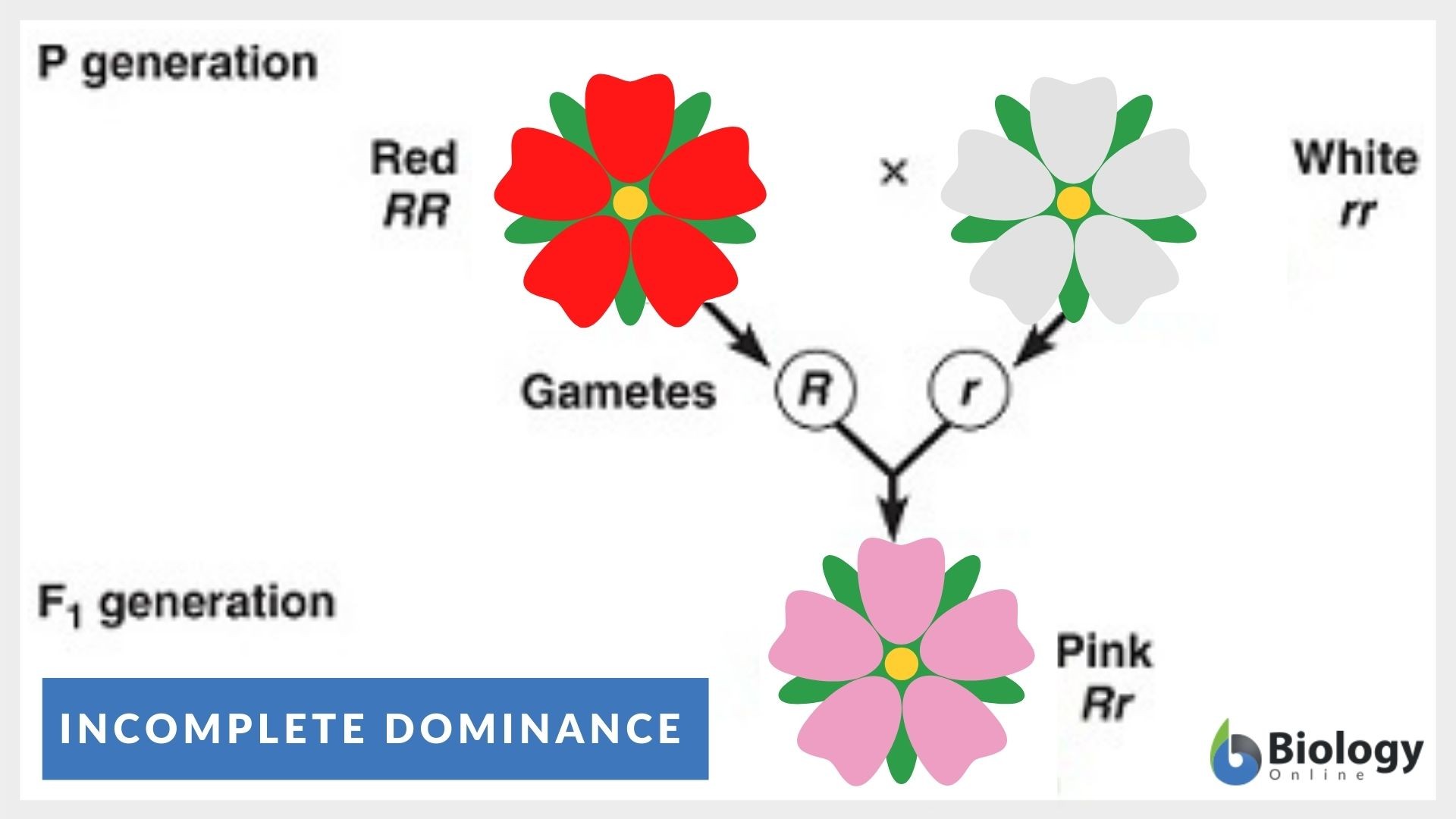


Incomplete dominance is an inheritance pattern in which neither allele is completely dominant, so the heterozygous phenotype is an intermediate (blended) form of the two homozygous phenotypes.
Incomplete dominance = blending of traits in heterozygotes
Let:
Cross: RR × WW
Offspring:
📌 Pink is not a new allele; it’s the intermediate phenotype.
Parents: RW × RW
Possible offspring:
Phenotype ratio: 1 red : 2 pink : 1 white
📌 Notice: phenotype ratio = genotype ratio in incomplete dominance.
| Pattern | Heterozygous result | Example | | ------------------------ | ------------------------- | ------------------ | | Dominant–recessive | Dominant trait only | Brown eyes | | Incomplete dominance | Blended trait | Red × white → pink | | Codominance | Both traits fully visible | AB blood type |
Incomplete dominance:
Incomplete dominance occurs when heterozygous individuals show an intermediate, blended phenotype.
不完全显性是指: 两个等位基因中没有一个完全显性,杂合体表现为中间型性状。
不完全显性 = 性状混合表现
花的颜色:
杂交后:
📌 粉红不是新基因,而是红和白的中间表现。
父母:RW × RW
后代比例:
👉 表现型比例 = 基因型比例
| 遗传方式 | 表现结果 | | ----- | ---------- | | 不完全显性 | 中间型(混合) | | 共显性 | 两种性状同时清楚出现 |
不完全显性指杂合体表现为两种性状的中间型。
如果你愿意,我可以把 dominant / recessive / incomplete dominance / codominance 整理成 Science 10 中英对照对比表、潘尼特方格练习或互动闪卡,非常适合系统复习与教学。
heterozygous




Heterozygous describes a genotype in which an organism has two different alleles for the same gene.
Heterozygous = two different alleles (e.g., Aa)
Each allele comes from a different parent.
Example:
In simple dominance:
Example:
📌 The recessive allele can still be passed to offspring.
| Term | Alleles | Example | Trait shown | | ------------------------ | --------- | ------- | ------------------ | | Heterozygous | Different | Aa | Dominant (usually) | | Homozygous dominant | Same | AA | Dominant | | Homozygous recessive | Same | aa | Recessive |
Punnett squares show how heterozygous parents pass on alleles.
Example: Aa × Aa
Possible offspring:
Genotype ratio:
📌 Half the offspring are heterozygous (Aa).
Heterozygous individuals:
Heterozygous means having two different alleles for a gene.
Heterozygous(杂合)指的是: 同一性状的两个等位基因不相同。
杂合 = 两个不同的等位基因
常见形式:
例子:
| 类型 | 等位基因 | 示例 | | ---- | ---- | -- | | 杂合 | 不同 | Aa | | 纯合显性 | 相同 | AA | | 纯合隐性 | 相同 | aa |
父母:Aa × Aa
后代可能为:
比例:1 : 2 : 1
杂合指一个性状的两个等位基因不同。
如果你愿意,我可以把 heterozygous / homozygous / dominant / recessive / Punnett squares 整理成 Science 10 中英对照闪卡或互动练习,直接用于复习或课堂教学。
homozygous




Homozygous describes a genotype in which an organism has two identical alleles for a particular gene.
Homozygous = same alleles + same alleles
Common examples:
A) Homozygous dominant
B) Homozygous recessive
📌 Recessive traits only appear when the genotype is homozygous recessive.
| Term | Alleles | Example | Trait shown | | ---------------- | --------- | -------- | ------------------------------- | | Homozygous | Same | AA or aa | Dominant (AA) or recessive (aa) | | Heterozygous | Different | Aa | Dominant |
Punnett squares often show homozygous outcomes.
Example: Aa × Aa
Possible offspring genotypes:
Genotype ratio:
Homozygous genotypes:
Homozygous means having two identical alleles for a gene.
Homozygous(纯合)指的是: 某一性状的两个等位基因完全相同。
纯合 = 两个一样的等位基因
常见形式:
① 纯合显性
② 纯合隐性
| 类型 | 等位基因 | 例子 | | -- | ---- | ----- | | 纯合 | 相同 | AA、aa | | 杂合 | 不同 | Aa |
父母:Aa × Aa
后代可能为:
比例:1 : 2 : 1
纯合指一个性状的两个等位基因相同。
如果你需要,我可以把 homozygous / heterozygous / dominant / recessive 整理成 Science 10 中英对照速记卡或互动练习,方便系统复习。
genotype



A genotype is an organism’s genetic makeup for a specific trait — the combination of alleles it has.
Genotype = the alleles an organism carries
Genotypes are usually written as letter pairs, such as:
These letters represent genes, not physical appearance.
Genotypes are found on homologous chromosomes at the same gene location (locus).
Homozygous
Heterozygous
| Term | What it means | Example | | ------------- | ---------------- | ---------- | | Genotype | Genetic makeup | Bb | | Phenotype | Observable trait | Brown eyes |
📌 You inherit the genotype, but you observe the phenotype.
Punnett squares are used to predict possible genotypes of offspring.
Example: Parents: Aa × Aa
Possible genotypes:
Genotype ratio:
Genotype:
Genotype is the genetic makeup of an organism, represented by its allele combinations.
基因型(genotype)是指生物体在某一性状上所拥有的等位基因组合。
基因型 = 拥有的基因组合
常见表示方式:
纯合(homozygous)
杂合(heterozygous)
| 项目 | 含义 | | --- | ------- | | 基因型 | 基因组合 | | 表现型 | 实际表现的性状 |
📌 基因型决定潜力,表现型是结果。
父母:Aa × Aa
后代可能的基因型:
基因型是生物体所携带的等位基因组合。
如果你愿意,我可以把 allele → genotype → phenotype → Punnett square 整理成 Science 10 中英对照速记卡 / 课堂练习 / HTML 互动内容,方便你系统复习。
phenotype
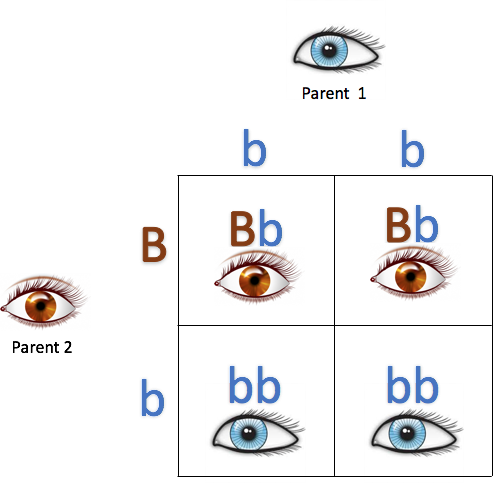


A phenotype is the observable characteristics of an organism—what you can see or measure.
Phenotype = the physical expression of genes
Examples include:
A phenotype is shaped by two factors:
Phenotype = genotype + environment
📌 This is why people with the same genes can sometimes look different.
| Term | Meaning | Example | | ------------- | --------------------------- | ---------- | | Genotype | The alleles an organism has | Bb | | Phenotype | The trait that appears | Brown eyes |
You inherit the genotype, but you observe the phenotype.
Punnett squares predict possible phenotypes of offspring.
Example:
Possible genotypes → phenotypes:
📌 Phenotype ratios often differ from genotype ratios.
Even with the same genotype, environment can change phenotype:
This shows phenotype is not fixed by genes alone.
Phenotypes:
Phenotype is the observable traits of an organism resulting from the interaction of genes and environment.
表现型(phenotype)是指生物能够被观察到的性状或特征。
表现型 = 基因表现出来的外在结果
例如:
表现型由两部分共同决定:
表现型 = 基因型 + 环境
| 概念 | 含义 | | --- | -------- | | 基因型 | 拥有的等位基因 | | 表现型 | 实际表现出的性状 |
潘尼特方格用来预测:
表现型是基因与环境共同作用下表现出来的性状。
如果你愿意,我可以把 genotype / phenotype / allele / Punnett square 整理成 Science 10 中英对照闪卡或互动练习,方便系统复习。
recessive
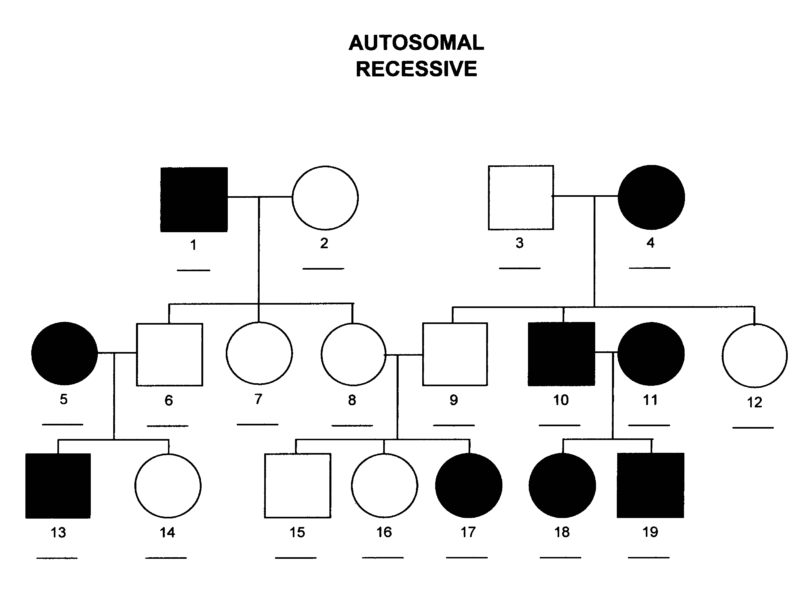



Recessive describes an allele whose effect is hidden when a dominant allele is present. A recessive trait is expressed only when both alleles are recessive.
Recessive = shows only when two recessive alleles are present
📌 Genetics notation:
| Genotype | Trait shown | | -------- | --------------------------- | | AA | Dominant | | Aa | Dominant (recessive hidden) | | aa | Recessive |
Common textbook examples:
📌 A person can carry a recessive allele without showing the trait.
Punnett squares help predict recessive traits.
Example: Parents: Aa × Aa
Possible offspring:
👉 25% chance of showing the recessive trait (aa)
| Feature | Dominant | Recessive | | ----------------------- | ------------------- | -------------------- | | Expression | Shows with 1 allele | Shows with 2 alleles | | Hidden by other allele? | No | Yes | | Written as | Capital letter | Lowercase letter |
Recessive traits:
A recessive allele is expressed only when two copies are present and is hidden by a dominant allele.
隐性(recessive)指的是一种等位基因,当与显性等位基因同时存在时,不会表现出来。
隐性 = 只有在两个隐性等位基因同时存在时才表现
📌 携带者:有隐性基因,但不表现性状。
父母:Aa × Aa
结果:
| 项目 | 显性 | 隐性 | | ---- | ------ | ---- | | 表现条件 | 有一个就表现 | 必须两个 | | 书写方式 | 大写字母 | 小写字母 |
隐性性状只有在两个隐性等位基因同时存在时才会表现。
如果你需要,我可以把 dominant / recessive / codominance / incomplete dominance 整理成 Science 10 中英对照速记表或练习题,帮助你快速区分考点。
codominance


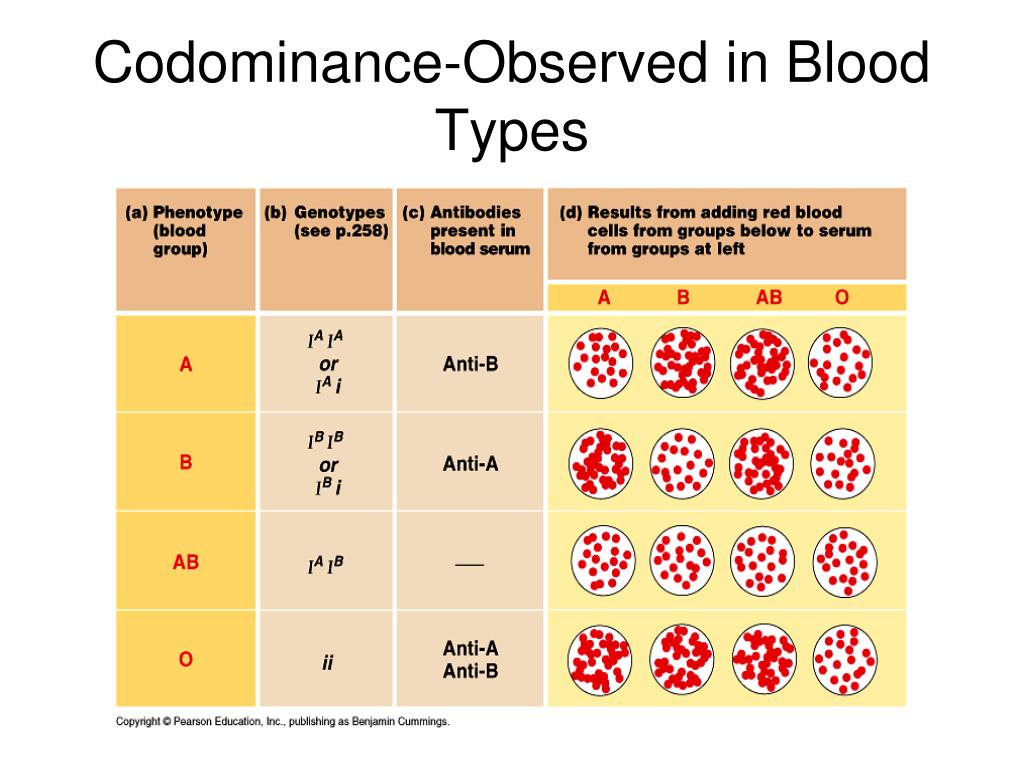

Codominance is a pattern of inheritance in which both alleles in a heterozygous individual are fully and equally expressed.
Codominance = both alleles show at the same time
Neither allele is dominant or recessive over the other.
In codominance:
📌 This is different from incomplete dominance, where traits blend.
| Feature | Codominance | Incomplete Dominance | | ----------------- | -------------------- | -------------------------- | | Allele expression | Both fully expressed | Blended | | Appearance | Both traits visible | Mixed/intermediate | | Example | AB blood type | Pink flowers (red × white) |
📌 AB blood type = codominance 📌 Pink flowers = incomplete dominance
Codominance still uses Punnett squares, but:
Example:
Codominance:
Codominance occurs when both alleles in a heterozygous individual are fully expressed at the same time.
共显性(codominance)指的是: 两个不同的等位基因在杂合体中都会完全表现出来。
共显性 = 两个等位基因同时、完整地表现
📌 和不完全显性不同,共显性没有中间型。
| 特点 | 共显性 | 不完全显性 | | -- | ------- | ----- | | 表现 | 两种性状都出现 | 性状混合 | | 结果 | 同时可见 | 中间型 | | 例子 | AB 血型 | 红×白→粉 |
共显性是指杂合体中两个等位基因同时完全表现的遗传方式。
如果你愿意,我可以把 dominance / incomplete dominance / codominance 整理成 Science 10 中英对照表或互动练习题,非常适合考试快速区分。
alleles



Alleles are different versions of the same gene. They control variations of a trait, such as eye color or flower color.
Allele = one version of a gene
Each gene can have two or more alleles, but an individual organism usually carries two alleles per gene (one from each parent).
📌 This is why offspring show traits from both parents.
Trait: Seed color
Possible allele combinations:
These combinations affect the trait that appears.
Dominant allele
Recessive allele
📌 Example:
| Term | Meaning | Example | | --------- | ------------------ | ---------- | | Allele | Version of a gene | A or a | | Genotype | Allele combination | Aa | | Phenotype | Physical trait | Brown eyes |
Alleles determine the genotype, which determines the phenotype.
Punnett squares:
📌 Example: Parents: Aa × Aa
Alleles:
Alleles are different versions of the same gene that determine variations in traits.
等位基因(alleles)是指同一基因的不同版本,决定同一性状的不同表现。
等位基因 = 同一基因的不同形式
性状:豌豆高度
组合可能是:
📌 Tt → 显性性状 📌 tt → 隐性性状
等位基因是控制同一性状的不同基因形式。
如果你愿意,我可以把 alleles → genotype → phenotype → Punnett squares 整理成 Science 10 中英对照闪卡或互动练习,直接用于复习或教学。
traits




Traits are characteristics or features of an organism. They describe how an organism looks, behaves, or functions.
Trait = a characteristic of a living thing
Traits can be:
These traits are controlled by genes and passed from parents to offspring.
Examples:
📌 These traits are present from birth.
These traits develop due to life experiences or environment.
Examples:
📌 These traits are not inherited genetically.
Many traits result from both heredity and environment.
Examples:
In genetics, traits are:
📌 Example:
Punnett squares are used to predict traits in offspring.
| Term | Meaning | Example | | --------- | ------------------- | ---------- | | Genotype | Genetic makeup | Bb | | Phenotype | Physical expression | Brown eyes |
📌 Traits are what you see (phenotype), based on genes (genotype).
Traits:
Traits are characteristics of organisms that can be inherited, acquired, or influenced by both genes and environment.
性状(traits)是指生物表现出来的特征或特点。
性状 = 生物的特征
由基因决定,从父母传给子女。
例子:
由环境或经历造成。
例子:
| 概念 | 含义 | | --- | ---- | | 基因型 | 基因组合 | | 表现型 | 外在性状 |
性状是生物的特征,由遗传和环境共同决定。
如果你需要,我可以把 traits / inherited traits / acquired traits / Punnett squares 做成 Science 10 中英对照闪卡或课堂练习题,直接用于教学或复习。
Punnett squares




Punnett squares are simple diagrams used in genetics to predict the possible genetic outcomes of offspring from two parents.
Punnett square = a tool to predict inherited traits
They help scientists and students see:
Punnett squares are used to:
They do not guarantee results — they show likelihood.
| Term | Meaning | | --------- | -------------------------------------------- | | Gene | Section of DNA that controls a trait | | Allele | Different forms of a gene (e.g., A or a) | | Dominant | Masks another allele (A) | | Recessive | Only shows if both alleles are recessive (a) | | Genotype | Genetic makeup (AA, Aa, aa) | | Phenotype | Physical appearance (tall, short, etc.) |
Trait: Plant height
Parents: Tt × Tt
Step 1: Draw a 2×2 square Step 2: Put one parent’s alleles across the top (T, t) Step 3: Put the other parent’s alleles down the side (T, t) Step 4: Fill in the boxes
Resulting genotypes:
Genotype ratio
Phenotype ratio
📌 Even though only 1 box is tt, that still means a 25% chance of short offspring.
A) Monohybrid cross
B) Dihybrid cross (advanced)
Punnett squares:
Punnett squares are diagrams used to predict the probability of genetic traits in offspring.
潘尼特方格是一种遗传学工具,用来预测父母基因组合在后代中可能出现的结果。
潘尼特方格 = 预测遗传结果的表格
潘尼特方格可以帮助我们:
| 英文 | 中文 | | --------- | ---- | | Gene | 基因 | | Allele | 等位基因 | | Dominant | 显性 | | Recessive | 隐性 | | Genotype | 基因型 | | Phenotype | 表现型 |
例子:豌豆高度
父母:Tt × Tt
填表后得到:
基因型比例
表现型比例
📌 这表示: 25% 矮,75% 高(概率,不是保证)
潘尼特方格用于预测遗传性状在后代中出现的概率。
如果你愿意,我可以把 Punnett square → allele → genotype → phenotype 整理成 Science 10 中英对照闪卡 / 课堂练习 / HTML 互动方格,直接给学生用。
hereditary
hereditary
Download the complete Review Process [PDF] including:
Download the complete Review Process [PDF] including:
Download the complete Review Process [PDF] including:
complementary bases.


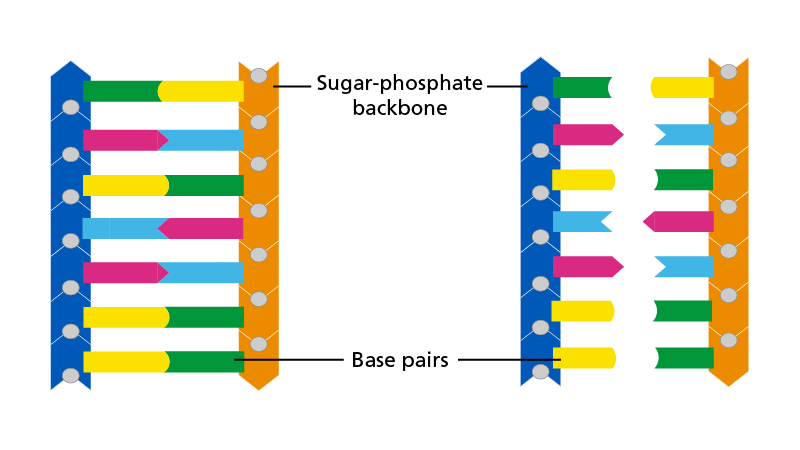

Complementary bases are pairs of nitrogenous bases that fit together in a specific way in DNA (and RNA).
Complementary bases = bases that pair in a fixed, matching pattern
They are called complementary because:
In DNA:
In RNA:
📌 These rules never change.
Complementary pairing happens because of:
Details:
This keeps DNA:
DNA looks like a twisted ladder:
Each rung is:
A) DNA replication
B) Transcription (DNA → RNA)
C) Genetic accuracy
If one DNA strand is:
A T G C C A
The complementary strand is:
T A C G G T
Complementary bases are specific base pairs (A–T and C–G) that hold DNA strands together and allow accurate replication.
互补碱基是指在 DNA(或 RNA)中,只能按照固定规则配对的碱基。
互补碱基 = 能一一对应配对的碱基
DNA 中:
RNA 中:
互补的原因是:
具体来说:
这保证了 DNA 结构:
DNA 像一把梯子:
每一个“横档”就是一对互补碱基。
① DNA 复制
② 转录(DNA → RNA)
③ 遗传稳定性
如果 DNA 一条链是:
A T G C
互补链是:
T A C G
互补碱基是 DNA 中按照 A–T、C–G 规则配对的碱基,保证遗传信息准确复制。
如果你愿意,我可以把 complementary bases → DNA replication → transcription 做成 Science 10 中英对照流程图 / 互动闪卡,直接用于课堂或复习。
rung



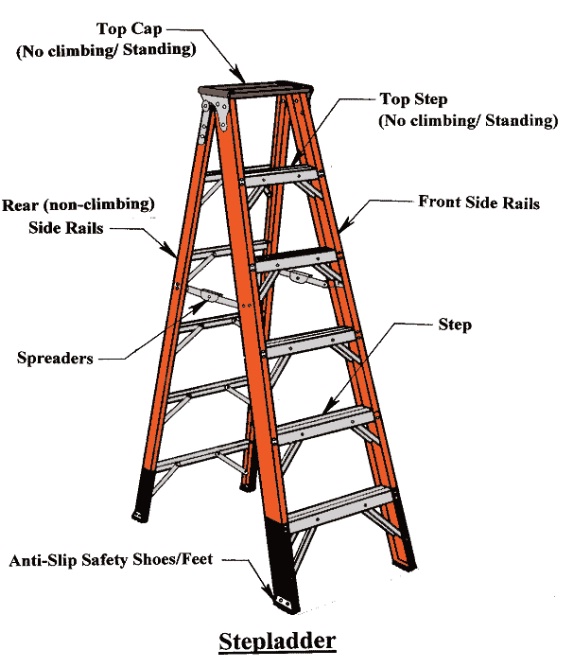
A rung is a horizontal step or bar that connects the two sides of a ladder.
Rung = one step of a ladder
You climb a ladder by stepping on its rungs.
In biology, rung is often used as a comparison (metaphor) when explaining DNA structure.
📌 Each DNA rung is made of a base pair:
These base pairs are held together by hydrogen bonds.
Each rung consists of:
Example:
One rung = A on one strand + T on the other strand
The ladder model helps students visualize that:
📌 The sequence of rungs = genetic code.
A rung is a horizontal step of a ladder; in DNA, rungs represent paired nitrogenous bases connecting the two strands.
Rung 指的是梯子上的横档或踏板,用来踩踏和攀爬。
Rung = 梯子的一格横档
在生物学中,DNA 常被比作一把梯子:
📌 每一个 DNA 的“rung”由一对碱基组成:
Rung 指梯子的横档,在 DNA 中用来比喻连接两条链的碱基对。
如果你需要,我可以把 ladder model → rung → base pair → hydrogen bond 做成 Science 10 中英对照图解或互动闪卡,非常适合课堂讲解与复习。
strands
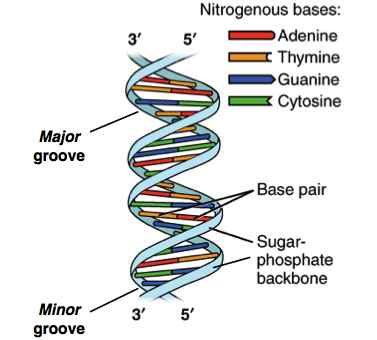



Strands are long, thin lines or threads of material. In science, the word is often used to describe structures that are stretched out rather than clumped or round.
Strand = a long, thin piece of something
DNA is made of two strands that twist together to form a double helix.
📌 One strand is not enough for stable DNA → two strands are needed.
RNA usually has only one strand.
📌 This is why RNA is more flexible but less stable than DNA.
Some proteins form strand-like fibers, such as:
| Term | Meaning | | ------------ | ---------------------------- | | Strand | One long, thin line | | Chain | Many units linked together | | Double helix | Two strands twisted together |
📌 In DNA:
Strands are long, thin chains; DNA has two strands, while RNA usually has one.
Strands 指的是 细长、线状的结构。
Strand = 一条细长的链或丝
DNA 由 两条链(两条 strand)组成:
RNA 通常是 单链结构:
某些蛋白质呈丝状结构:
| 英文 | 中文 | 说明 | | ------------ | --- | ------- | | strand | 链 | 一条细长结构 | | chain | 链条 | 多个单位连接 | | double helix | 双螺旋 | 两条链扭在一起 |
DNA 是双链结构,RNA 通常是单链结构。
如果你愿意,我可以把 strand → nucleotide → base pairing → double helix 做成 Science 10 中英对照概念图或互动闪卡,直接用于复习或教学。
ribonucleic



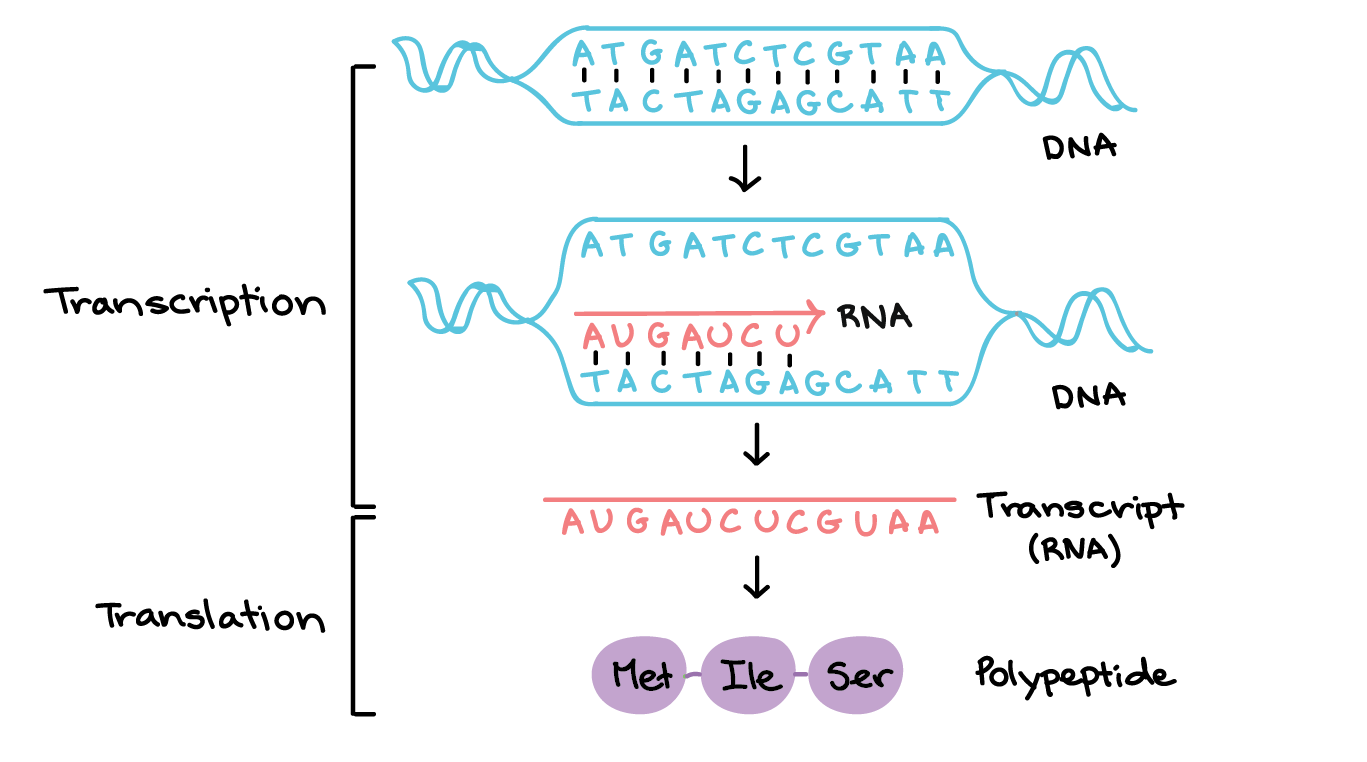
Ribonucleic means related to RNA (ribonucleic acid). The word is most commonly seen in ribonucleic acid, abbreviated as RNA.
Ribonucleic = having to do with RNA
The name comes from its components:
So:
Ribonucleic acid = nucleic acid containing ribose sugar
RNA is a molecule that:
Unlike DNA, RNA is usually:
Each RNA nucleotide has:
RNA bases are:
📌 The presence of ribose sugar is what makes RNA “ribo”-nucleic.
mRNA (messenger RNA)
tRNA (transfer RNA)
rRNA (ribosomal RNA)
All of these are ribonucleic acids.
| Feature | Ribonucleic (RNA) | Deoxyribonucleic (DNA) | | --------- | ----------------- | ---------------------- | | Sugar | Ribose | Deoxyribose | | Strands | Single | Double | | Bases | A, U, C, G | A, T, C, G | | Function | Protein synthesis | Store genetic info | | Stability | Lower | Higher |
Without ribonucleic acid:
DNA stores information; ribonucleic acid uses it
Ribonucleic refers to RNA, a nucleic acid containing ribose sugar that helps convert genetic information into proteins.
Ribonucleic 指的是与 RNA(核糖核酸)有关的。
Ribonucleic = 核糖核酸的
RNA 是含有核糖的核酸。
RNA(核糖核酸)是:
RNA 的每个核苷酸包括:
RNA 的碱基是:
| 项目 | RNA | DNA | | -- | ----- | ------ | | 糖 | 核糖 | 脱氧核糖 | | 结构 | 单链 | 双链 | | 功能 | 蛋白质合成 | 储存遗传信息 |
Ribonucleic 指的是核糖核酸(RNA),一种含核糖、参与蛋白质合成的核酸。
如果你愿意,我可以把 ribonucleic / deoxyribonucleic / nucleotide / base 做成 Science 10 中英对照概念链或互动闪卡,方便你系统复习。
Thymine
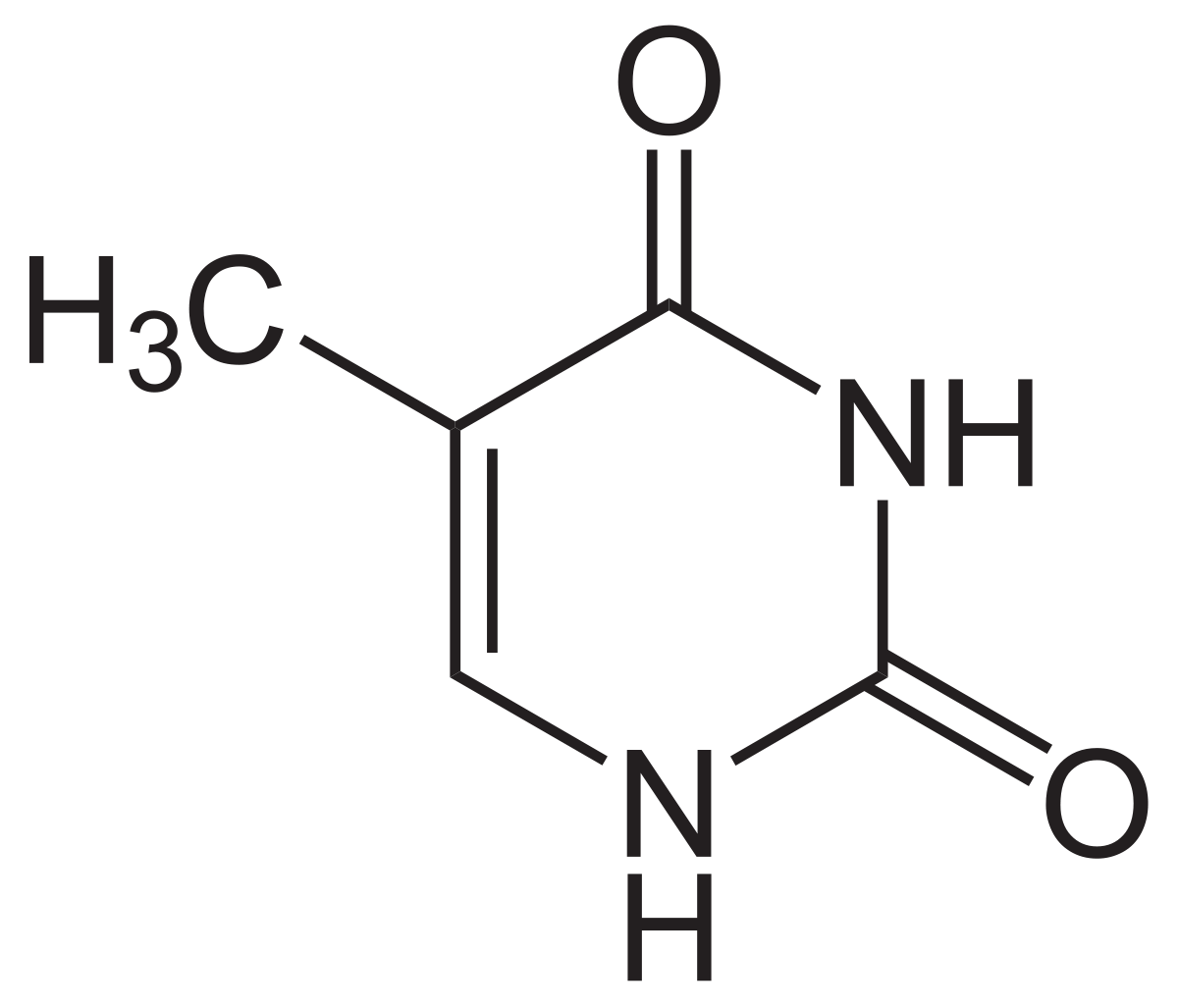

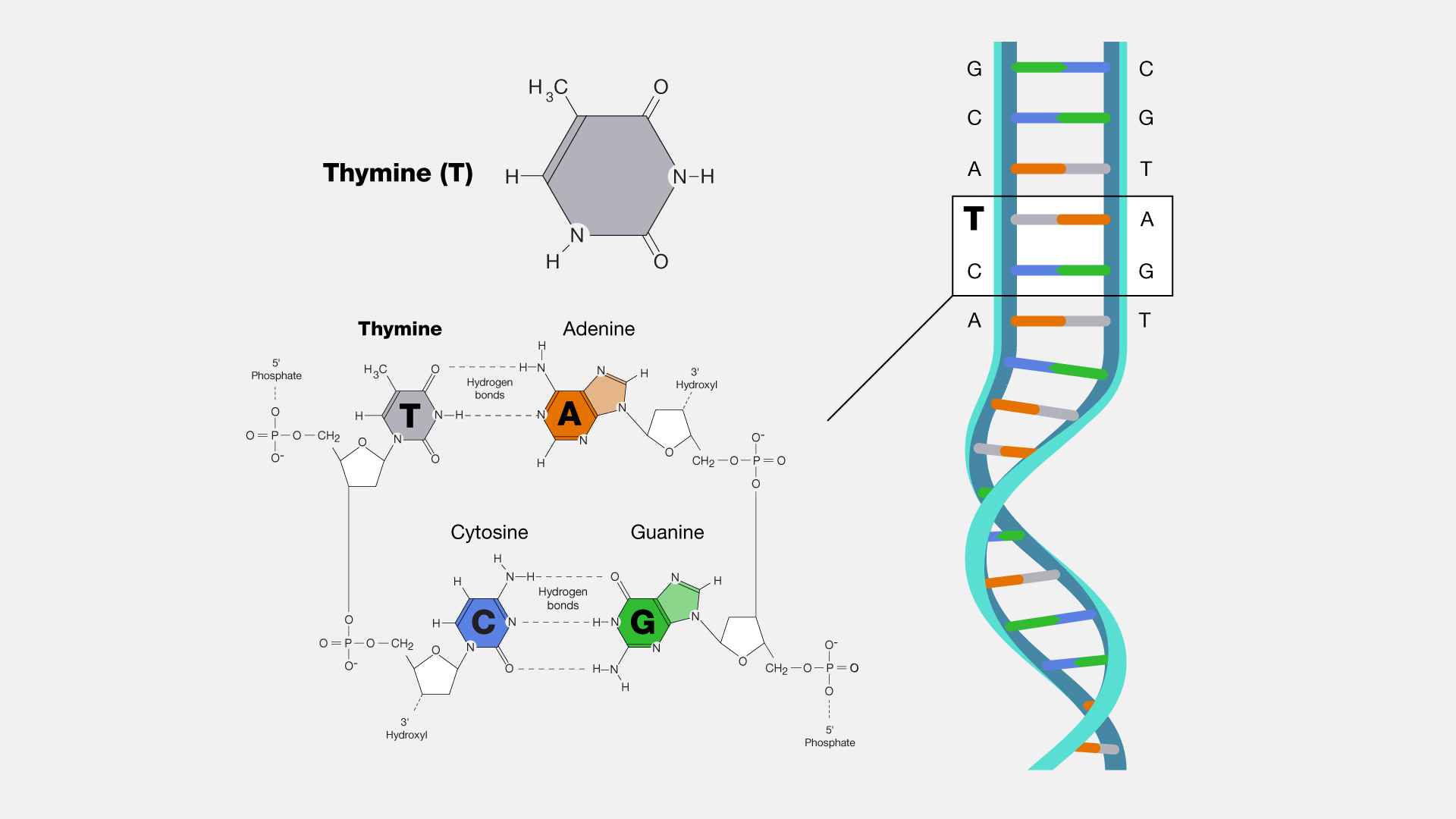

Thymine is a nitrogenous base found only in DNA. It is one of the four bases that make up the DNA genetic code.
Thymine = a DNA base that pairs with adenine
Each thymine base is part of a nucleotide, attached to:
In DNA:
This specific pairing:
Thymine belongs to the pyrimidines, which:
Pyrimidines: Cytosine (C), Thymine (T), Uracil (U) Purines: Adenine (A), Guanine (G)
Purine–pyrimidine pairing keeps the DNA double helix a constant width.
A mistake involving thymine (a mutation) can:
| Feature | Thymine (T) | Uracil (U) | | ---------- | ----------- | ----------- | | Found in | DNA | RNA | | Pairs with | Adenine | Adenine | | Stability | More stable | Less stable |
📌 Thymine makes DNA more stable for long-term information storage.
Thymine is a pyrimidine nitrogenous base found only in DNA that pairs with adenine using two hydrogen bonds.
胸腺嘧啶(Thymine,T)是一种只存在于 DNA 中的含氮碱基,是 DNA 遗传信息的重要组成部分。
胸腺嘧啶 = DNA 中与腺嘌呤配对的碱基
DNA 中:
这种精确配对保证 DNA 复制准确。
胸腺嘧啶属于 嘧啶(pyrimidine):
| 项目 | 胸腺嘧啶 | 尿嘧啶 | | ---- | ---- | --- | | 所在分子 | DNA | RNA | | 配对对象 | 腺嘌呤 | 腺嘌呤 | | 稳定性 | 更高 | 较低 |
胸腺嘧啶是 DNA 中与腺嘌呤配对、具有两条氢键的嘧啶碱基。
如果你需要,我可以把 A–T vs C–G 的稳定性比较或把 四种 DNA 碱基整理成 Science 10 中英对照闪卡 / 互动图表,方便系统复习与教学。
Guanine



Guanine is a nitrogenous base found in DNA and RNA. It is one of the four bases that make up the genetic code.
Guanine = a nitrogen-containing base that stores genetic information
Guanine appears in:
It is always part of a nucleotide, attached to:
In DNA:
In RNA:
📌 Because there are three hydrogen bonds, G–C pairs are stronger and more stable than A–T pairs.
Guanine belongs to the purines, which:
Purines: Adenine (A), Guanine (G) Pyrimidines: Cytosine (C), Thymine (T), Uracil (U)
This size matching (purine–pyrimidine) keeps the DNA double helix uniform in width.
In DNA:
Changes involving guanine can cause mutations, potentially affecting proteins and traits.
Guanine is a purine nitrogenous base that pairs with cytosine using three hydrogen bonds in DNA and RNA.
鸟嘌呤(Guanine,G)是一种存在于 DNA 和 RNA 中的含氮碱基,是遗传信息的重要组成部分。
鸟嘌呤 = DNA / RNA 中的遗传“字母”之一
鸟嘌呤存在于:
它与:
DNA 中:
RNA 中:
📌 三条氢键使 G–C 配对更加牢固。
鸟嘌呤属于 嘌呤(purine):
对比:
碱基变化可能导致突变。
鸟嘌呤是 DNA 和 RNA 中与胞嘧啶配对、具有三条氢键的嘌呤碱基。
如果你需要,我可以把 A–T vs C–G 的稳定性对比、或把四种碱基做成 Science 10 中英对照闪卡 / 互动图解,直接用于复习或教学。
Cytosine



Cytosine is a nitrogenous base found in DNA and RNA. It is one of the four main bases that make up the genetic code.
Cytosine = a nitrogen-containing base that helps store genetic information
Cytosine occurs in:
It is always part of a nucleotide, attached to:
In DNA:
In RNA:
📌 The three hydrogen bonds make the C–G pair stronger than the A–T pair.
Cytosine belongs to the pyrimidines, which:
Purines (double ring):
Pyrimidines (single ring):
This size matching keeps the DNA double helix uniform in width.
In DNA:
A change in cytosine (mutation) can:
Because C–G pairs have three hydrogen bonds:
Cytosine is a pyrimidine nitrogenous base that pairs with guanine using three hydrogen bonds in DNA and RNA.
胞嘧啶(Cytosine,C)是一种存在于 DNA 和 RNA 中的含氮碱基,是遗传信息的基本组成单位之一。
胞嘧啶 = DNA / RNA 中的重要碱基
胞嘧啶存在于:
它与:
DNA 中:
RNA 中:
📌 三条氢键使 C–G 配对更牢固。
胞嘧啶属于 嘧啶(pyrimidine):
嘌呤(双环):A、G 嘧啶(单环):C、T、U
碱基变化可能导致突变。
胞嘧啶是 DNA 和 RNA 中与鸟嘌呤配对的嘧啶碱基,具有三条氢键。
如果你愿意,我可以把 Adenine / Thymine / Cytosine / Guanine 做成 Science 10 中英对照碱基配对表或互动闪卡,非常适合系统复习与教学。
Adenine



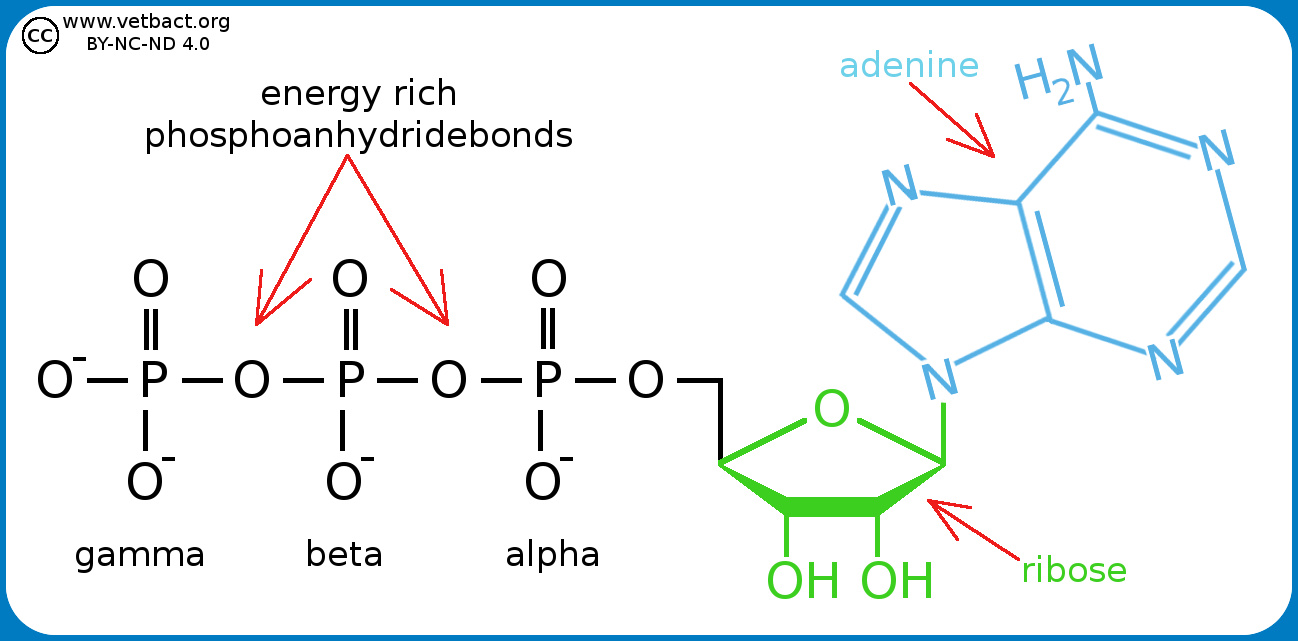
Adenine is a nitrogenous base found in DNA and RNA. It is one of the letters of the genetic code.
Adenine = a nitrogen-containing base that carries genetic information
Adenine appears in several key biological molecules:
In DNA:
In RNA:
These pairing rules ensure accurate DNA replication and correct protein synthesis.
Adenine belongs to the purines, which:
Purines: Adenine (A), Guanine (G) Pyrimidines: Cytosine (C), Thymine (T), Uracil (U)
This size difference explains why:
In DNA:
Changing adenine’s position can:
Adenine is part of ATP (adenosine triphosphate):
ATP provides energy for:
Adenine is a purine nitrogenous base that pairs with thymine in DNA and with uracil in RNA.
腺嘌呤(Adenine,A)是一种含氮碱基,存在于 DNA 和 RNA 中,是遗传信息的“字母”之一。
腺嘌呤 = DNA / RNA 中的重要遗传碱基
DNA 中:
RNA 中:
这些规则保证了遗传信息的准确复制和表达。
腺嘌呤属于 嘌呤(purine):
嘌呤:A、G 嘧啶:C、T、U
碱基变化可能导致突变。
腺嘌呤是 ATP(三磷酸腺苷)的一部分:
腺嘌呤是 DNA 中与 T 配对、RNA 中与 U 配对的嘌呤碱基。
如果你需要,我可以把 Adenine / Thymine / Cytosine / Guanine 做成 Science 10 中英对照碱基配对表或互动闪卡,方便系统复习。
nitrogenousbase




A nitrogenous base is a nitrogen-containing molecule that is part of a nucleotide, the building block of DNA and RNA.
Nitrogenous base = the “letter” of the genetic code
Each nucleotide has:
The sequence of bases stores genetic information.
In DNA:
In RNA:
📌 Only the bases change; the sugar–phosphate backbone stays the same.
Purines (two rings):
Pyrimidines (one ring):
This size difference explains base pairing rules.
DNA base pairing:
RNA base pairing:
Hydrogen bonds hold paired bases together, forming the double helix in DNA.
Nitrogenous bases:
Changing a base (a mutation) can change traits.
Bases encode information; nucleotides build the molecule.
Nitrogenous bases are nitrogen-containing molecules in DNA and RNA whose sequence stores genetic information.
含氮碱基是含有氮原子的分子,是 DNA 和 RNA 的核苷酸组成部分之一。
含氮碱基 = 遗传信息的“字母”
每个核苷酸由:
DNA 中:
RNA 中:
嘌呤(双环):
嘧啶(单环):
DNA:
RNA:
这些配对通过氢键连接,使 DNA 形成双螺旋结构。
含氮碱基是 DNA 和 RNA 中储存遗传信息的关键成分。
如果你需要,我可以把 nitrogenous base → nucleotide → DNA → gene 做成 Science 10 中英对照速记卡或互动图解,非常适合系统复习。
sugar
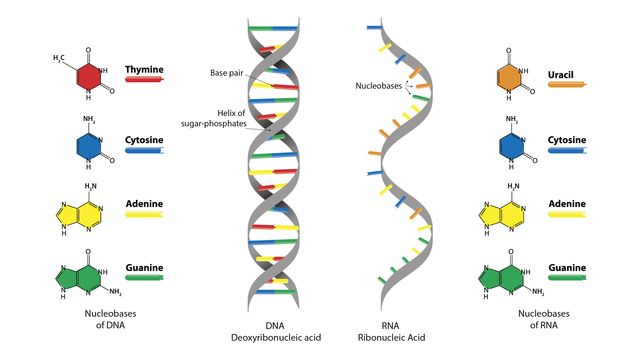



The sugar found in DNA is called deoxyribose. It is a five-carbon sugar (a pentose) and is one of the three essential parts of a DNA nucleotide.
DNA sugar = deoxyribose
Each DNA nucleotide contains:
📌 This small difference makes DNA:
A) Forms the backbone
B) Connects to bases
Two sugar–phosphate backbones twist together to form the double helix.
| Feature | DNA | RNA | | ------------------- | ------------------ | ------------------ | | Sugar | Deoxyribose | Ribose | | Oxygen at 2′ carbon | ❌ Missing | ✅ Present | | Stability | More stable | Less stable | | Function | Store genetic info | Help make proteins |
Without the sugar:
Sugar = the structural “frame” that holds DNA together
The sugar in DNA is deoxyribose, which forms the sugar–phosphate backbone and supports the structure of the DNA molecule.
DNA 中的糖叫 脱氧核糖(deoxyribose),是一种五碳糖。
DNA 的糖 = 脱氧核糖
每个 DNA 核苷酸由三部分组成:
📌 这使 DNA:
① 构成骨架
② 连接碱基
两条这样的链相互缠绕,形成 DNA 双螺旋结构。
| 项目 | DNA | RNA | | --- | ------ | ----- | | 糖 | 脱氧核糖 | 核糖 | | 氧原子 | 少一个 | 多一个 | | 稳定性 | 高 | 低 | | 功能 | 储存遗传信息 | 蛋白质合成 |
DNA 中的糖是脱氧核糖,它与磷酸一起形成 DNA 的骨架结构。
如果你需要,我可以把 nucleotide → sugar → phosphate → DNA backbone 做成 中英对照闪卡或可交互 HTML 图解,直接用于 Science 10 复习或教学。
phosphategroup

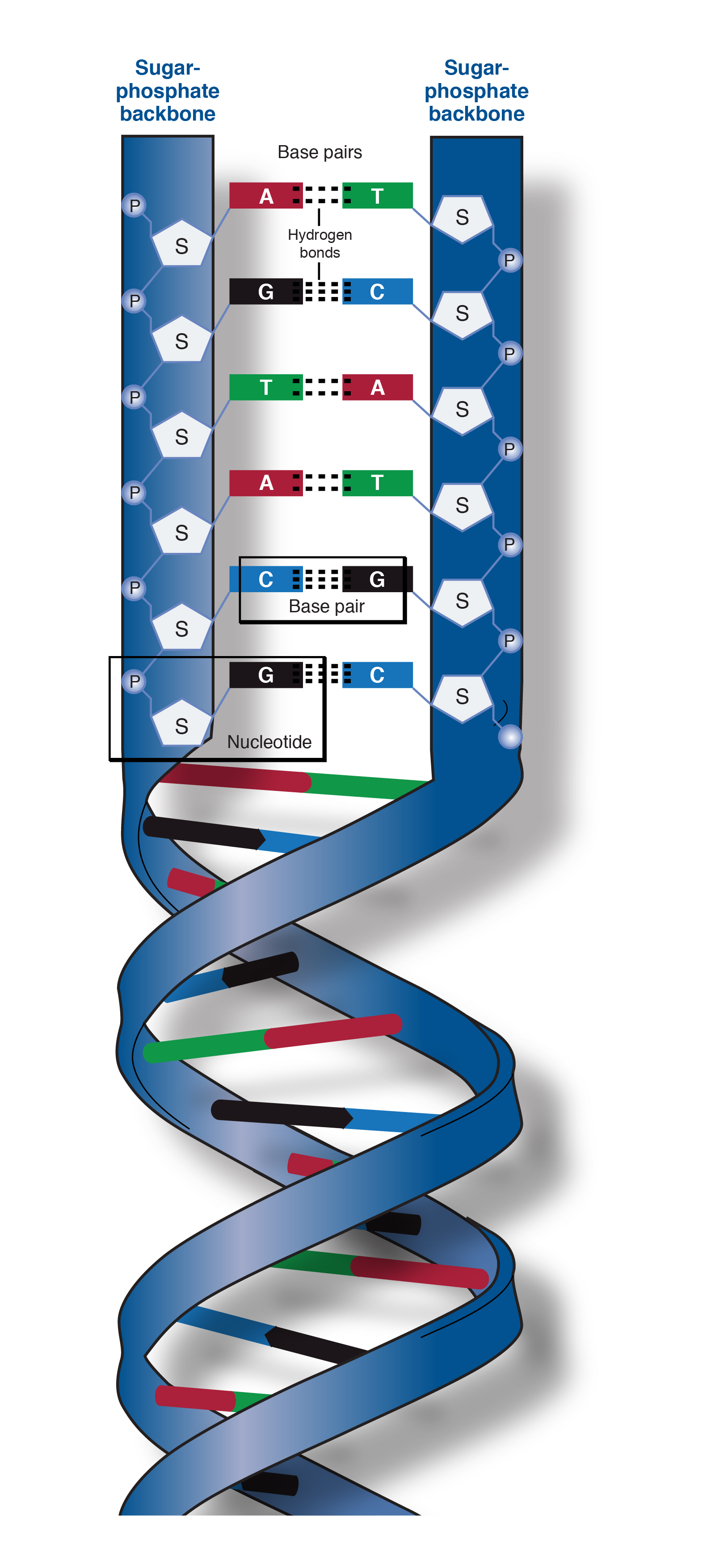


A phosphate group is a chemical group made of one phosphorus atom bonded to four oxygen atoms (PO₄³⁻).
In biology, phosphate groups are extremely important because they:
Phosphate group = a key chemical unit for structure and energy
In DNA and RNA, every nucleotide contains:
The phosphate group:
This creates the sugar–phosphate backbone of DNA and RNA.
📌 Without phosphate groups, nucleotides could not form long chains.
Phosphate groups form phosphodiester bonds, which:
This is why DNA can safely store genetic information.
Phosphate groups are also central to energy transfer.
In ATP (adenosine triphosphate):
📌 This energy powers cell activities like:
Phosphate groups also:
A phosphate group links nucleotides together to form the sugar–phosphate backbone of DNA and stores energy in molecules like ATP.
磷酸基团是一种由 1 个磷原子和 4 个氧原子组成的化学基团(PO₄³⁻)。
在生物体内,磷酸基团非常重要,因为它:
磷酸基团 = 结构与能量的关键单位
DNA 和 RNA 中的每个核苷酸都包含:
磷酸基团的作用:
从而形成 糖—磷酸骨架。
磷酸基团形成的磷酸二酯键:
在 ATP(三磷酸腺苷)中:
这些能量用于:
磷酸基团把核苷酸连接成 DNA 的骨架,并在 ATP 中储存和释放能量。
如果你愿意,我可以把 phosphate group → nucleotide → DNA backbone → ATP 做成 Science 10 中英对照概念图或互动闪卡,非常适合你现在的生物复习进度。
blooms




Algal blooms occur when algae grow very quickly and in large numbers in a body of water, often turning the water green, blue-green, or brown.
Algal bloom = rapid overgrowth of algae in water
Blooms commonly happen in ponds, lakes, rivers, and coastal waters.
Algal blooms are caused by a combination of favorable conditions:
Excess nutrients (especially nitrogen and phosphorus)
From fertilizers, sewage, farm runoff
This nutrient enrichment is called eutrophication.
A) Non-toxic blooms
B) Harmful algal blooms (HABs)
Even though algae are producers, blooms can damage ecosystems:
📌 This oxygen loss is called hypoxia.
Algal blooms can:
In a pond:
Algal blooms are rapid increases in algae caused by excess nutrients, often leading to low oxygen and ecosystem damage.
藻华(algal blooms)是指藻类在水体中迅速、大量繁殖的现象,常使水体呈现绿色、蓝绿色或褐色。
藻华 = 藻类数量突然暴增
藻华通常由以下因素共同引起:
这种水体富营养化过程叫 水体富营养化。
① 无毒藻华
② 有害藻华
藻华是由养分过多引起的藻类快速繁殖,会导致水体缺氧和生态破坏。
如果你需要,我可以把 algae / algal / algal bloom / eutrophication 做成 Science 10 中英对照概念图或互动闪卡,直接用于考试复习。
algal




Algal is an adjective that means related to or caused by algae.
Algal = having to do with algae
It is used to describe things like algal cells, algal growth, or algal blooms.
Algae are mostly aquatic, photosynthetic organisms. They can be:
Algae are not true plants, but many behave like plants because they:
Algal growth
Algal bloom
Algal cells
Algal mats
Algal blooms often occur when:
Effects:
📌 This process is linked to eutrophication.
Algal organisms:
📌 Example:
Algal growth increases in warm, nutrient-rich water.
Algal 是一个形容词,意思是 “与藻类有关的”。
Algal = 藻类的
藻类是大多生活在水中的能进行光合作用的生物,可以是:
藻华通常发生在:
影响:
Algal means related to algae, especially in aquatic ecosystems. Algal 指与藻类有关的事物。
如果你需要,我可以把 alga / algae / algal 做成 Science 10 中英对照速记卡或易错点练习题,非常适合考试复习。
amoebas




Amoebas are microscopic, single-celled protists that usually live in water or moist environments. They are famous for their constantly changing shape.
Amoeba = one cell that changes shape to move and eat
Amoebas are commonly found in:
Most amoebas are free-living and harmless, but a few can cause disease.
Amoebas move using pseudopodia (“false feet”).
This movement is called amoeboid movement.
Amoebas are heterotrophic (they must eat food).
Steps:
This feeding method is called phagocytosis.
| Structure | Function | | ------------------- | -------------------------- | | Pseudopodia | Movement and feeding | | Cell membrane | Controls entry and exit | | Cytoplasm | Site of chemical reactions | | Nucleus | Controls cell activities | | Food vacuole | Digestion | | Contractile vacuole | Pumps out excess water |
Because amoebas live in freshwater:
Amoebas are single-celled protists that move and eat using pseudopodia.
变形虫(amoebas)是生活在水或潮湿环境中的单细胞原生生物。 它们最显著的特点是形状不断变化。
变形虫 = 靠改变形状来运动和进食的单细胞生物
大多数变形虫对人类无害。
变形虫通过伪足运动:
这种方式叫 变形运动。
变形虫是异养生物,进食过程如下:
这种方式称为 吞噬作用(phagocytosis)。
| 结构 | 功能 | | --- | ------- | | 伪足 | 运动、捕食 | | 细胞膜 | 控制物质进出 | | 细胞质 | 生命活动场所 | | 细胞核 | 控制细胞 | | 食物泡 | 消化 | | 伸缩泡 | 排水、防止胀破 |
变形虫是通过伪足运动和进食的单细胞原生生物。
如果你需要,我可以把 Amoeba / Paramecium / Euglena 做成 Science 10 中英对照比较表或互动闪卡,非常适合系统复习与课堂讲解。
Euglena



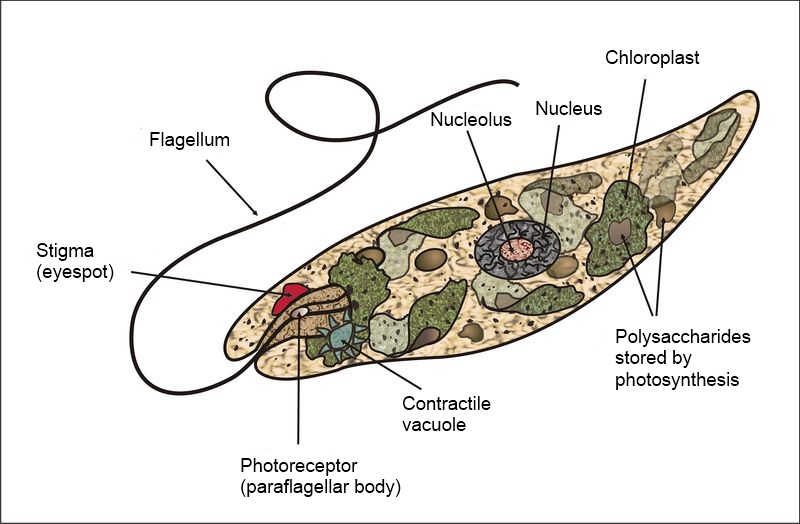
Euglena is a microscopic, single-celled protist that lives mainly in freshwater. It is special because it can act like both a plant and an animal.
Euglena = a mix of plant-like and animal-like traits
Euglena is often used to show that living things do not always fit neatly into one group.
Plant-like:
Has chloroplasts
Animal-like:
Can move
This flexible nutrition is called mixotrophic.
Euglena moves using a flagellum (a long, whip-like structure).
A) Photosynthesis (like plants)
B) Heterotrophic feeding (like animals)
| Structure | Function | | ------------------- | -------------------------------------- | | Flagellum | Movement | | Eyespot (stigma) | Detects light | | Chloroplasts | Photosynthesis | | Nucleus | Controls cell activities | | Pellicle | Flexible outer layer (not a cell wall) | | Contractile vacuole | Removes excess water |
Euglena has a red eyespot that:
This behavior is called phototaxis.
Euglena often thrives in water with plenty of light.
Euglena is a single-celled protist that can photosynthesize like a plant and move like an animal using a flagellum.
眼虫(Euglena)是一种生活在淡水中的单细胞原生生物。 它的最大特点是:既像植物,又像动物。
眼虫 = 兼具植物和动物特征的原生生物
像植物:
有叶绿体
像动物:
能主动运动
这种双重营养方式称为 混合营养(mixotrophic)。
① 光合作用(有光时)
② 异养方式(无光时)
| 结构 | 功能 | | --- | ------- | | 鞭毛 | 运动 | | 眼点 | 感光 | | 叶绿体 | 光合作用 | | 细胞核 | 控制生命活动 | | 表膜 | 保护并保持形状 | | 伸缩泡 | 排出多余水分 |
这种向光移动的行为叫 趋光性。
眼虫是一种能进行光合作用、又能主动运动的单细胞原生生物。
如果你愿意,我可以把 Euglena / Paramecium / Amoeba 做成 Science 10 中英对照对比表或互动闪卡,非常适合系统复习。
Paramecium

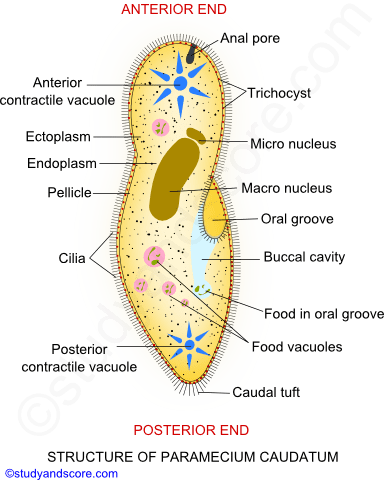

Paramecium is a microscopic, single-celled protist that lives mainly in freshwater, such as ponds.
Even though it is only one cell, it can:
Paramecium = a single cell that does everything a living organism needs to do
Paramecium is commonly found in:
These environments contain many bacteria, which Paramecium feeds on.
Paramecium is covered with tiny hair-like structures called cilia.
Cilia:
📌 This makes Paramecium very active compared to many other protists.
Paramecium is heterotrophic (cannot make its own food).
Steps:
| Structure | Function | | ----------------------- | -------------------------------------- | | Cilia | Movement and feeding | | Oral groove | Directs food inward | | Food vacuole | Digests food | | Contractile vacuole | Pumps out excess water | | Nucleus (macro & micro) | Controls cell functions & reproduction | | Cell membrane | Protects cell and controls entry/exit |
Because it lives in freshwater:
👉 This prevents the cell from bursting.
Paramecium reproduces mainly by binary fission:
Sometimes, Paramecium can exchange genetic material through conjugation, which increases genetic diversity.
Paramecium is a microscopic, single-celled protist that moves using cilia and feeds on bacteria in freshwater environments.
草履虫(Paramecium)是一种生活在淡水中的单细胞原生生物。
虽然只有一个细胞,但它可以:
草履虫表面布满纤毛:
草履虫是异养生物,进食过程如下:
| 结构 | 功能 | | --- | ------ | | 纤毛 | 运动和进食 | | 口沟 | 引导食物 | | 食物泡 | 消化 | | 伸缩泡 | 排出多余水分 | | 细胞核 | 控制生命活动 | | 细胞膜 | 保护细胞 |
由于生活在淡水中:
草履虫是利用纤毛运动、以细菌为食的单细胞原生生物。
如果你愿意,我可以把 Paramecium / Amoeba / Euglena 做成 Science 10 中英对照比较表或互动闪卡,非常适合你现在的生物复习节奏。
Protists

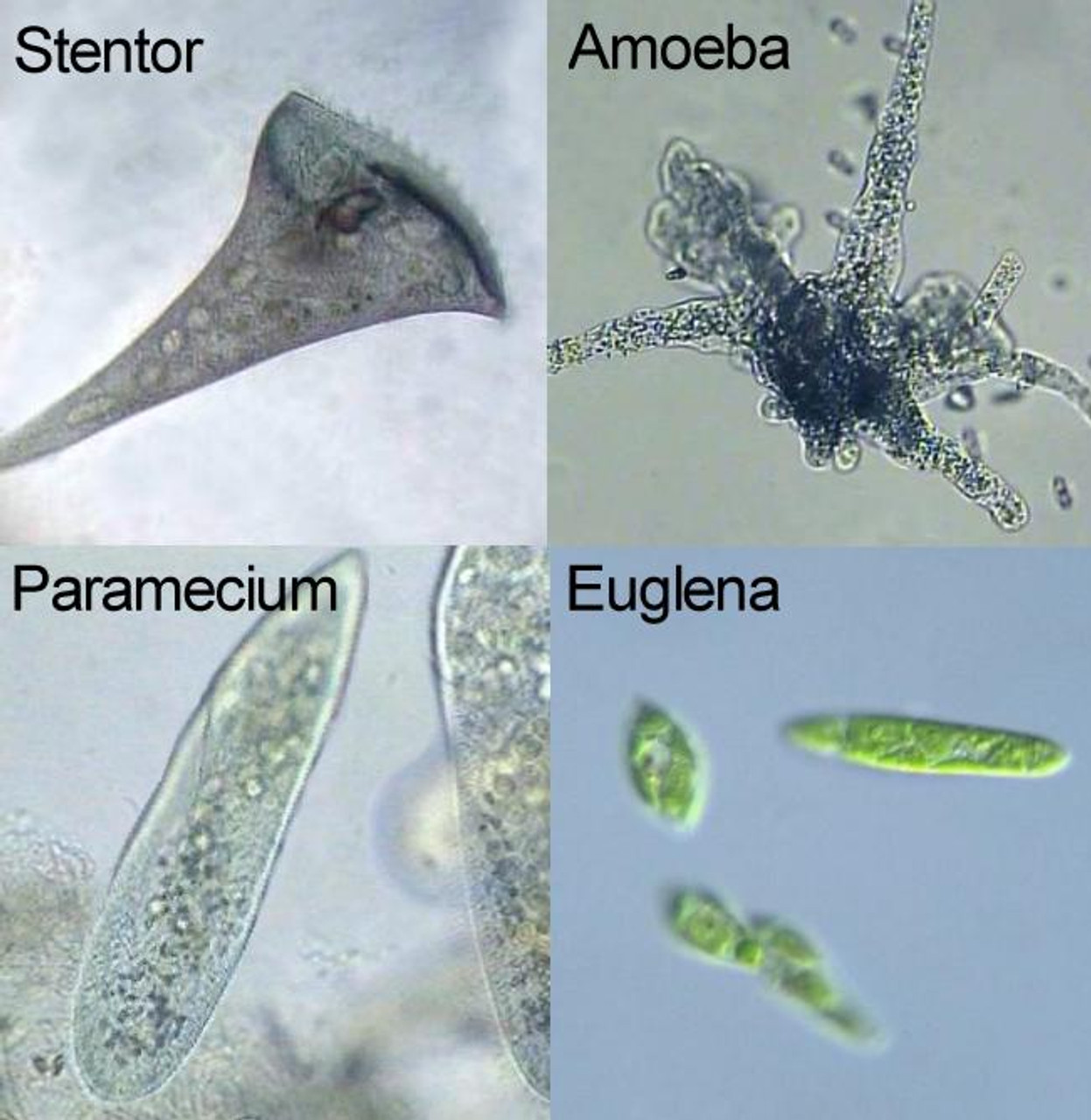
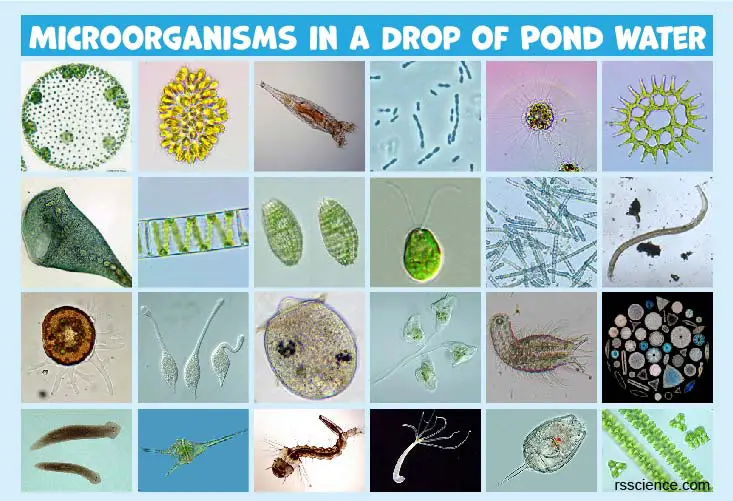

Protists are a diverse group of mostly microscopic, eukaryotic organisms that do not fit into the plant, animal, or fungi kingdoms.
Protists = mostly single-celled eukaryotes that are not plants, animals, or fungi
Key point for Science 10:
Protists are grouped not because they are similar, but because they are eukaryotes that don’t belong elsewhere.
They are extremely diverse in:
Examples:
📌 These protists ingest other organisms.
Examples:
📌 Algae produce oxygen and form the base of many food chains.
Examples:
Protists usually live in:
Anywhere there is water, protists can usually thrive.
Protists play major roles in ecosystems:
Even though they are microscopic, they have huge ecological impact.
| Feature | Protists | Bacteria | | ---------- | ---------- | ----------- | | Cell type | Eukaryotic | Prokaryotic | | Nucleus | ✅ Yes | ❌ No | | Size | Larger | Smaller | | Organelles | Present | Absent |
Protists are mostly microscopic eukaryotic organisms that live in water and do not belong to the plant, animal, or fungi kingdoms.
原生生物(Protists)是一类大多为单细胞的真核生物,它们既不是植物、也不是动物或真菌。
原生生物 = 不属于植物、动物、真菌的真核生物
关键点:
原生生物被归在一起,并不是因为它们相似,而是因为:
例子:
只要有水,就可能发现原生生物。
原生生物是主要生活在水中的单细胞真核生物。
如果你需要,我可以把 Protists / Bacteria / Fungi 做成 Science 10 中英对照对比表或互动闪卡,直接用于考试复习或课堂教学。
multitude



Multitude means a very large number of people or things—many more than just “several” or “some.”
Multitude = a great many / a large quantity
It emphasizes quantity and abundance.
It is often used with “of”
a multitude of stars
In biology and ecology, multitude is commonly used to describe:
📌 Example:
A healthy pond contains a multitude of microscopic organisms.
| Word | Meaning | Strength | | ------------- | ----------------- | ---------- | | few | very small number | low | | several | more than a few | low–medium | | many | large number | medium | | multitude | very large number | high | | countless | too many to count | very high |
It can be treated as singular or plural, depending on meaning:
A multitude of species is found here. (focus on the group)
Multitude 表示 数量非常多的事物或人,强调“多”和“丰富”。
Multitude = 大量的 / 众多的
常与 of 连用:
a multitude of 动植物
在生物和生态学中,multitude常用来描述:
📌 例句:
一个健康的生态系统中存在着众多不同的物种。
| 英文 | 中文 | 数量感觉 | | ------------- | -- | ------- | | few | 很少 | 少 | | several | 几个 | 较少 | | many | 许多 | 多 | | multitude | 众多 | 非常多 |
Multitude means a very large number of people or things. Multitude 表示数量极多的事物或人。
如果你愿意,我可以把 multitude / many / several / few 做成 Science 10 中英对照速记卡或练习题,帮助学生准确选词。
thrive
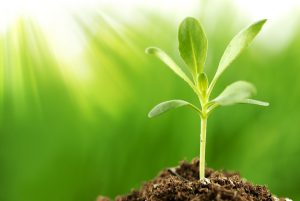



Thrive means to grow well, stay healthy, and do better than just surviving. When something thrives, it is strong, active, and successful in its environment.
Thrive = grow and do very well
These two words are often compared:
📌 Example:
In biology and ecology, thrive means an organism has:
📌 Example sentence:
Fish thrive in clean, oxygen-rich water.
An organism thrives when:
When many organisms thrive, the ecosystem is healthy.
“Thrive” is not only for biology:
Thrive 指的是 生长良好、状态健康、不只是勉强活着。
Thrive = 茁壮成长、发展得很好
📌 例子:
在生态学中,生物要“茁壮成长”,需要:
📌 例句:
青蛙在湿润的池塘环境中茁壮成长。
当生物适应环境、资源充足时:
To thrive means to grow well and be healthy, not just survive. Thrive 指的是在良好条件下茁壮成长,而不仅仅是生存。
如果你需要,我可以把 thrive / survive / adapt 做成 Science 10 中英对照速记卡或互动闪卡,非常适合考试复习。
microscopic




Microscopic describes something that is so small it cannot be seen with the naked eye and must be viewed using a microscope.
Microscopic = too small to see without a microscope
📌 Examples:
Many important living things are microscopic:
Living microscopic organisms
Microscopic structures
Even though microscopic organisms are tiny, they are extremely important:
In pond ecosystems:
Without microscopic life, ecosystems would collapse.
Scientists use:
Microscopes magnify objects many times to make them visible.
Microscopic(微观的、显微的)指的是小到肉眼无法看见,必须借助显微镜才能观察的事物。
Microscopic = 需要显微镜才能看到的
📌 例子:
微生物
微观结构
虽然它们很小,但作用巨大:
Microscopic objects are too small to be seen without a microscope. 微观事物需要借助显微镜才能观察。
如果你愿意,我可以把 microscopic / macroscopic / microscope 做成 Science 10 中英对照速记卡或互动闪卡,方便你系统复习。
coniferous
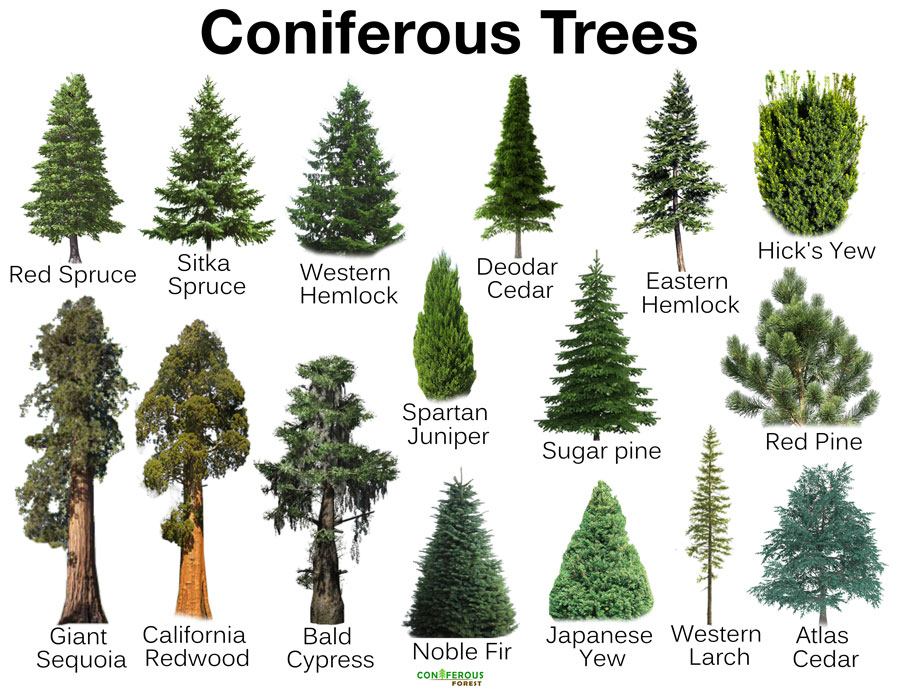



Coniferous describes trees and plants that produce cones and usually have needle-like or scale-like leaves. Most coniferous trees are evergreen, meaning they stay green all year.
Coniferous = cone-bearing, usually evergreen trees
Needle-shaped leaves help coniferous trees survive harsh environments:
These features make coniferous trees well adapted to cold or dry climates.
Large coniferous forests exist in Canada, Alaska, Scandinavia, and Russia.
| Feature | Coniferous | Deciduous | | --------- | ------------------- | ------------------ | | Leaves | Needles or scales | Broad, flat | | Leaf loss | Usually keep leaves | Lose leaves yearly | | Seeds | Cones | Flowers / fruits | | Climate | Cold / dry | Temperate |
Coniferous forests:
Coniferous(针叶植物的)指的是结球果的植物,通常具有针状或鳞片状叶子,而且大多是常绿植物。
Coniferous = 结松果的常绿植物
针叶结构有助于在恶劣环境中生存:
加拿大大部分森林都是针叶林。
| 特点 | 针叶林 | 落叶林 | | ---- | ------- | ---- | | 叶子 | 针状 | 宽叶 | | 是否落叶 | 常绿 | 每年落叶 | | 繁殖 | 球果 | 花和果实 | | 气候 | 寒冷 / 干燥 | 温带 |
Coniferous plants produce cones and usually keep their needle-like leaves year-round. 针叶植物通过结球果并保持针状叶来适应寒冷环境。
如果你需要,我可以把 coniferous vs deciduous 做成 Science 10 中英对照速记卡 / 对比图表 / HTML 互动闪卡,非常适合考试复习。
ponds




Ponds are small, shallow bodies of freshwater. They are usually shallower than lakes, so sunlight can reach the bottom, allowing plants to grow throughout much of the pond.
Pond = small, shallow freshwater ecosystem
Because light reaches the bottom, ponds often have many plants.
Ponds support many forms of life:
Plants
Animals
A simple pond food chain:
Energy flows from the Sun → plants → animals.
Important non-living factors include:
Changes in these factors affect pond life.
Ponds change with the seasons:
Shallow ponds may freeze more easily than lakes.
Ponds:
Even small ponds play a big role in ecosystems.
池塘(ponds)是较小、较浅的淡水水体。 由于水浅,阳光可以照到水底,因此植物可以在池塘各处生长。
池塘 = 小型、浅水的淡水生态系统
植物
动物
简单的池塘食物链:
能量来源于太阳。
这些因素会影响池塘生态平衡。
Ponds are small, shallow freshwater ecosystems that support a wide variety of plants and animals. 池塘是浅水淡水生态系统,支持多样的动植物生存。
如果你需要,我可以把 ponds / lakes / wetlands 做成 Science 10 对比表或互动闪卡,方便系统复习。
deciduous
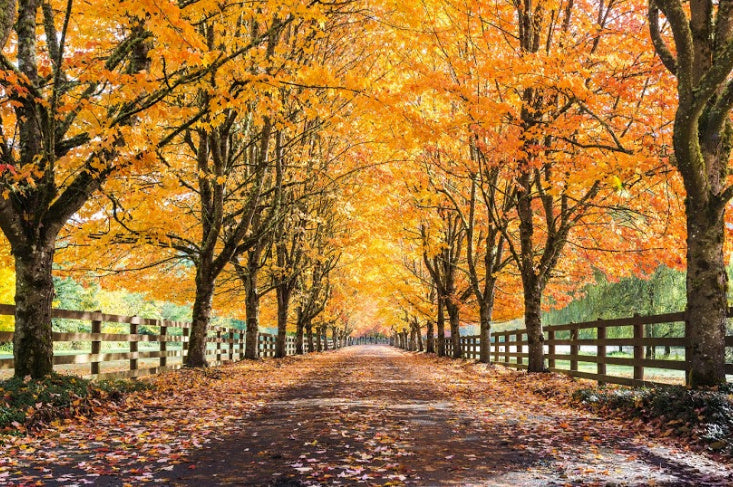



Deciduous describes plants (especially trees) that lose their leaves once every year, usually in autumn (fall).
Deciduous = sheds leaves seasonally
After losing their leaves, deciduous plants:
Leaf loss is a survival strategy, not a weakness.
Main reasons:
By dropping leaves, the tree reduces water loss and damage.
Before leaves fall:
Other pigments become visible:
Yellow / orange (carotenoids)
This causes the autumn colors seen in deciduous forests.
Common deciduous trees include:
Many trees in temperate climates are deciduous.
| Feature | Deciduous | Evergreen | | ----------------- | ------------- | ------------------------- | | Leaves | Broad, thin | Needle-like or thick | | Leaf loss | Once a year | Gradual / not all at once | | Winter appearance | Bare branches | Green year-round | | Climate | Temperate | Cold or dry regions |
The word deciduous means “falling off” in biology:
Deciduous(落叶性的)指的是每年在特定季节(通常是秋天)会落叶的植物,尤其是树木。
Deciduous = 每年定期落叶
冬天:
落叶是一种适应环境的生存策略。
主要原因包括:
在秋天:
其他色素显现:
黄色、橙色(类胡萝卜素)
这就形成了秋季彩叶景观。
这些树在温带地区非常常见。
| 特点 | 落叶树 | 常绿树 | | ---- | ---- | ------- | | 叶子 | 宽而薄 | 针状或厚 | | 是否落叶 | 每年一次 | 不同时全部脱落 | | 冬天外观 | 光秃 | 四季常绿 | | 适应环境 | 四季分明 | 寒冷或干燥 |
Deciduous 在生物学中也可表示“会脱落的”:
Deciduous plants lose their leaves once each year to survive cold or dry seasons. 落叶植物通过季节性落叶来适应寒冷或干燥环境。
如果你愿意,我可以把 deciduous vs evergreen 做成 Science 10 中英对照速记卡 / 对比表 / HTML 互动闪卡,方便你系统复习。
limbs


Limbs are movable body parts that extend from the main body of an animal. They are mainly used for movement, support, and interaction with the environment.
In humans, the limbs are:
Limbs = body extensions used for movement and function
Limbs can have different roles depending on the organism:
1) Upper limbs (forelimbs)
2) Lower limbs (hindlimbs)
3) Modified limbs Limbs can evolve to serve special purposes:
Most vertebrates share a similar limb bone structure, even if the limbs look different.
Common bones include:
This similarity shows common ancestry and is evidence of evolution.
All limbs are appendages, but not all appendages are limbs.
Limbs(肢体、四肢)是指从动物身体主干伸出的、可以活动的部分。
在人类中:
Limbs = 用来运动和操作的身体部分
不同动物的肢体功能不同,包括:
1) 前肢(上肢)
2) 后肢(下肢)
3) 变态肢体(特殊功能)
许多脊椎动物的肢体内部结构相似,即使外形不同。 这说明它们有共同祖先,是进化的证据。
Limbs are movable body parts used for movement and interaction. 肢体是用于运动和与环境互动的可活动身体部位。
如果你需要,我可以把 limbs / joints / muscles / bones 做成 Science 10 中英对照速记卡或互动闪卡,非常适合考试复习。
ingest



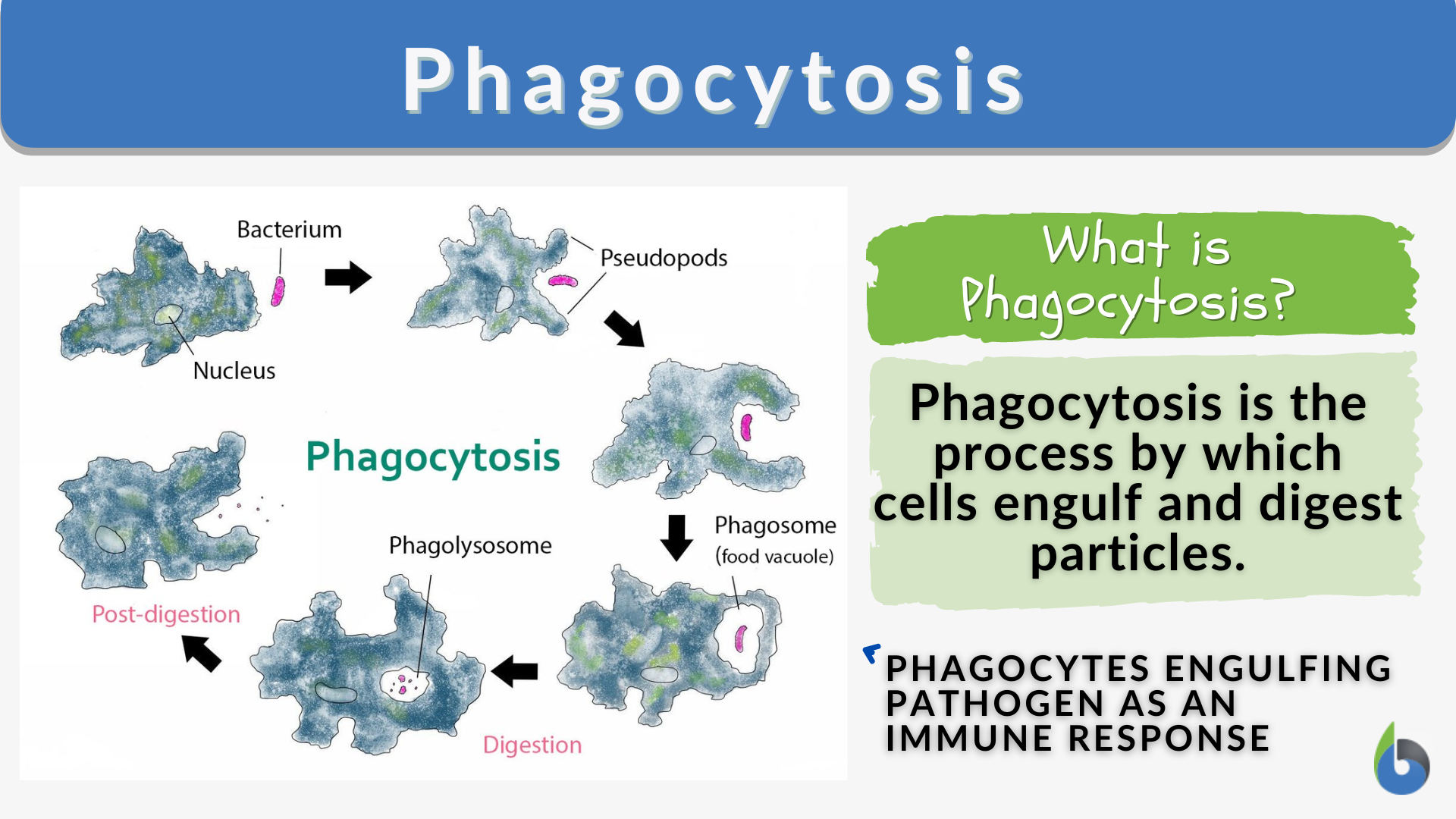
Ingest means to take food or another substance into the body, usually through the mouth.
In biology, it is the first step of nutrition.
Ingest = take in (eat or swallow)
These words are often confused, but they mean different steps:
📌 Example:
Some organisms do not have a mouth like humans:
Amoeba ingests food by engulfing it
This process is called phagocytosis
Energy flows through ecosystems because organisms ingest other organisms.
Ingest 指的是 把食物或物质摄入体内,通常是通过口腔。
在生物学中,它是营养过程的第一步。
Ingest = 吃进 / 摄入
这三个词代表不同阶段:
📌 例子:
一些简单生物(如变形虫):
能量通过“摄入”在生态系统中传递。
Ingest = take food into the body Ingest = 把食物吃进体内
如果你愿意,我可以把 ingest / digest / absorb 做成 中英对照表或 Science 10 闪卡,非常适合考试快速区分。
photosynthesis
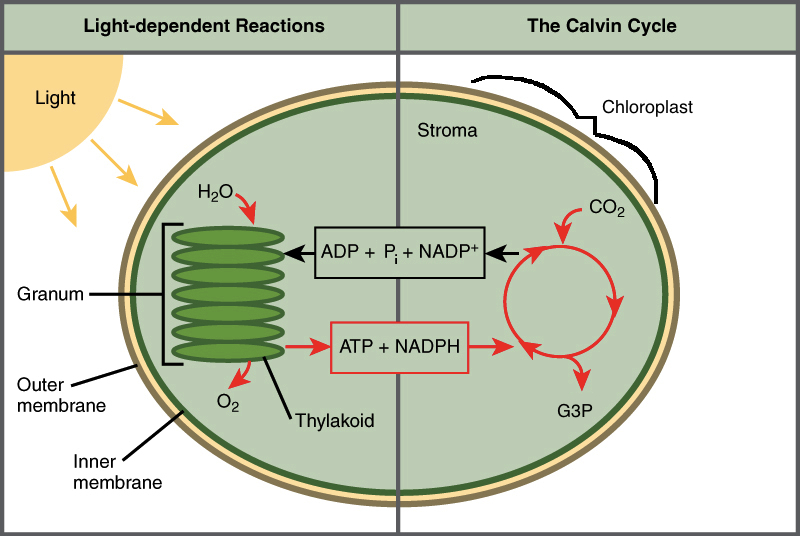


Photosynthesis is the process by which green plants, algae, and some bacteria use light energy to make food (glucose) from carbon dioxide and water.
In simple terms:
Photosynthesis = using sunlight to make sugar
This process is the foundation of almost all life on Earth, because it produces:
So photosynthesis literally means:
“Putting things together using light.”
[ 6CO_2 + 6H_2O + \text{light energy} \rightarrow C_6H_{12}O_6 + 6O_2 ]
Left side (inputs):
Right side (outputs):
Photosynthesis occurs in chloroplasts, which are found mainly in leaf cells.
Inside a chloroplast:
Chlorophyll, the green pigment in chloroplasts, absorbs sunlight.
Location: Thylakoid membranes Needs light: ✅ Yes
What happens:
Water is split into:
Oxygen (released)
Key idea: 👉 This stage captures energy from sunlight
Location: Stroma Needs light directly: ❌ No (but depends on Stage 1)
What happens:
Key idea: 👉 This stage builds sugar
Photosynthesis:
Without photosynthesis:
❌ No plants → ❌ no animals → ❌ no humans
光合作用是指绿色植物、藻类和某些细菌利用光能,把二氧化碳和水合成葡萄糖的过程。
一句话记忆:
光合作用 = 用阳光制造食物
光合作用不仅制造食物,还产生氧气,是地球生命的基础。
意思是:
利用光把物质合成在一起
[ 6CO_2 + 6H_2O + 光能 \rightarrow C_6H_{12}O_6 + 6O_2 ]
原料(左边):
产物(右边):
光合作用发生在叶绿体中,主要位于叶片细胞。
叶绿体内部:
叶绿素负责吸收光能,因此植物呈绿色。
位置: 类囊体膜 是否需要光: ✅ 需要
过程:
👉 作用:收集并储存光能
位置: 叶绿体基质 是否直接需要光: ❌ 不需要
过程:
👉 作用:制造糖类
光合作用:
没有光合作用:
❌ 没有植物 → ❌ 没有动物 → ❌ 没有人类
Photosynthesis uses light energy to convert CO₂ and water into glucose and oxygen. 光合作用利用光能把二氧化碳和水转化为葡萄糖和氧气。
如果你需要,我可以把这部分整理成 Science 10 考试速记卡 / 中英对照表 / HTML 互动闪卡,直接接进你现在的学习系统。




A stem is the main supporting structure of a plant, usually growing above the ground. It connects the roots to the leaves, flowers, and fruits.
In simple terms, the stem is the plant’s support pole + transport highway.
A) Support
B) Transport (vascular function) Inside most stems are transport tissues:
This allows all parts of the plant to survive and grow.
C) Storage Some stems store food or water:
D) Growth
1) Herbaceous stems
2) Woody stems
3) Modified stems Stems that are adapted for special jobs:
A stem has:
A root:
茎(stem)是植物的主要支撑结构,通常位于地上。它把根与叶、花和果实连接起来。
可以把茎理解为植物的 “骨架 + 运输通道”。
A) 支撑作用
B) 运输作用(维管组织) 茎内部有两种重要的运输组织:
C) 储存作用 有些茎用于储存营养或水分:
D) 生长作用
1) 草本茎
2) 木本茎
3) 变态茎(特殊功能的茎)
茎的作用 = 支撑 + 运输 + 生长 +(有时)储存
如果你愿意,我可以把 stem 做成 Science 10 考试版速记卡 / 中英对照表 / HTML 互动闪卡,非常适合你现在的生物学习体系。
What do you think is the responsibility of tech workers to think through the ethical implications of what they are making? Why do you think the people who Kumail talked with didn’t have answers to his questions?
Once we're in a certain headspace (especially if it's related to something we're really excited about), we can overlook even the simplest things. However, it should be our responsibility to seek outside perspectives and test other reactions to our inventions/creations in order to gain new perspectives and make sure that our products are ready for introduction. I think this might have been the issue that occurred when the people Kumail talked with didn't have answers to his questions. They didn't think to seek feedback on their new products which led to a narrow concept.
With the toughening of the regulatory framework in 2008, how are Trump's attempts to deregulate finance in 2025-26 being thwarted?
where I only had French fries and cheeseburgers and vanilla frappes
for this to be considered frugal shows how privileged she is
:将相关度设为 0.8 以上,这样只有“非常像”的笔记才会跳出来,减少“菜谱干扰财务报表”的低级错误。
有没有好的案例?
I couldn’t understand how she came to know Doreen or why she should want to help Doreen wake me up instead of leading her quietly back to her own room.
she just can't understand a service worker doing their job. class indicator
I had the impression it wasn’t night and it wasn’t day, but some lurid third interval that had suddenly slipped between them and would never end.
this is always how it feels after you nap
The Mother of All Demos
The Mother of All Demos 50 years later, we still don't grasp the mother of all demos
There are many other varieties of social media sites, though hopefully we have at least covered a decent range of them.
I found the discussion of blurred boundaries between public and private particularly compelling. The text highlights how users may experience social media as an intimate or personal space, while the platform simultaneously functions as a public arena with broader visibility and consequences. This tension helps explain why ethical norms on social media are often unclear or contested, since users may not share the same assumptions about what kind of space they are participating in.
More on Ethics
One ethical framework that could be added here is care ethics, which focuses on relationships, vulnerability, and responsibility rather than abstract rules or aggregate outcomes. In the context of social media automation, care ethics would draw attention to how bots affect trust, emotional labor, and users’ sense of being in a social space with other humans. This perspective could be especially relevant for platforms like Bluesky, where social interaction and community norms play an important role, and where even seemingly harmless automation might undermine relational trust.
服务/组件断联、告警通知、恢复处理(合并代维)
功能不可用的原因弄清楚。 最近在看巡检,项目重启后,在一定的时间周期内,部分运维功能不可用,没有一个明确的原因,就只说不可用,很差
组件安全问题修复
部分关键问题还在观察,实际风险是很大的,如果像去年那样,直接定一个 70%,很被动
60 years ago he presented all the tech that is essential to our lives today
Douglas Engelbart demonstrates revolutionary computing tools in 1968, showcasing concepts like graphical interfaces, video conferencing, hypertext, networked collaboration, and the mouse. Presented from Stanford Research Institute, the demo exemplifies Engelbart’s vision of augmenting human intellect using technology.
002052
DOI: 10.7150/ijms.114990
Resource: RRID:IMSR_JAX:002052
Curator: @dhovakimyan1
SciCrunch record: RRID:IMSR_JAX:002052
RRID:Addgene_12251
DOI: 10.70962/jhi.20250044
Resource: RRID:Addgene_12251
Curator: @dhovakimyan1
SciCrunch record: RRID:Addgene_12251
Addgene_12259
DOI: 10.70962/jhi.20250044
Resource: RRID:Addgene_12259
Curator: @dhovakimyan1
SciCrunch record: RRID:Addgene_12259
RRID:AB_2340773
DOI: 10.70962/jhi.20250044
Resource: (Jackson ImmunoResearch Labs Cat# 715-036-150, RRID:AB_2340773)
Curator: @dhovakimyan1
SciCrunch record: RRID:AB_2340773
RRID:CVCL_1906
DOI: 10.70962/jhi.20250044
Resource: (ATCC Cat# CCL-23, RRID:CVCL_1906)
Curator: @dhovakimyan1
SciCrunch record: RRID:CVCL_1906
RRID:AB_2728768
DOI: 10.70962/jhi.20250044
Resource: (Cell Signaling Technology Cat# 13901, RRID:AB_2728768)
Curator: @dhovakimyan1
SciCrunch record: RRID:AB_2728768
Addgene plasmids #105686
DOI: 10.64898/2026.01.01.697312
Resource: RRID:Addgene_105686
Curator: @dhovakimyan1
SciCrunch record: RRID:Addgene_105686
Addgene #60662
DOI: 10.64898/2026.01.01.697310
Resource: RRID:Addgene_60662
Curator: @dhovakimyan1
SciCrunch record: RRID:Addgene_60662
Addgene #156450
DOI: 10.64898/2026.01.01.697310
Resource: RRID:Addgene_156450
Curator: @dhovakimyan1
SciCrunch record: RRID:Addgene_156450
Addgene #156431
DOI: 10.64898/2026.01.01.697310
Resource: None
Curator: @dhovakimyan1
SciCrunch record: RRID:Addgene_156431
Addgene, #62988
DOI: 10.64898/2026.01.01.697310
Resource: RRID:Addgene_62988
Curator: @dhovakimyan1
SciCrunch record: RRID:Addgene_62988
AB_476692
DOI: 10.64898/2026.01.01.697161
Resource: (Sigma-Aldrich Cat# A1978, RRID:AB_476692)
Curator: @dhovakimyan1
SciCrunch record: RRID:AB_476692
AB_477593
DOI: 10.64898/2026.01.01.697161
Resource: (Sigma-Aldrich Cat# T9026, RRID:AB_477593)
Curator: @dhovakimyan1
SciCrunch record: RRID:AB_477593
AB_3065091
DOI: 10.64898/2026.01.01.697161
Resource: (Abcam Cat# ab232589, RRID:AB_3065091)
Curator: @dhovakimyan1
SciCrunch record: RRID:AB_3065091
AB_2207530
DOI: 10.64898/2026.01.01.697161
Resource: (Proteintech Cat# 11802-1-AP, RRID:AB_2207530)
Curator: @dhovakimyan1
SciCrunch record: RRID:AB_2207530
AB_2219912
DOI: 10.64898/2026.01.01.697161
Resource: (Thermo Fisher Scientific Cat# PA1-650, RRID:AB_2219912)
Curator: @dhovakimyan1
SciCrunch record: RRID:AB_2219912
AB_881444
DOI: 10.64898/2026.01.01.697161
Resource: (Abcam Cat# ab46798, RRID:AB_881444)
Curator: @dhovakimyan1
SciCrunch record: RRID:AB_881444
AB_2115327
DOI: 10.64898/2026.01.01.697161
Resource: (Proteintech Cat# 11308-1-AP, RRID:AB_2115327)
Curator: @dhovakimyan1
SciCrunch record: RRID:AB_2115327
AB_2069006
DOI: 10.64898/2026.01.01.697161
Resource: (Abcam Cat# ab22595, RRID:AB_2069006)
Curator: @dhovakimyan1
SciCrunch record: RRID:AB_2069006
RRID:SCR_018350
DOI: 10.64898/2025.12.31.697225
Resource: HALO (RRID:SCR_018350)
Curator: @dhovakimyan1
SciCrunch record: RRID:SCR_018350
RRID:SCR_022939
DOI: 10.64898/2025.12.31.697213
Resource: draw.io (RRID:SCR_022939)
Curator: @dhovakimyan1
SciCrunch record: RRID:SCR_022939
RRID:SCR_022938
DOI: 10.64898/2025.12.31.697213
Resource: Stanford Graduate School of Business Data, Analytics, and Research Computing Core Facility (RRID:SCR_022938)
Curator: @dhovakimyan1
SciCrunch record: RRID:SCR_022938
JAX 009086
DOI: 10.64898/2025.12.31.697198
Resource: (IMSR Cat# JAX_009086,RRID:IMSR_JAX:009086)
Curator: @dhovakimyan1
SciCrunch record: RRID:IMSR_JAX:009086
Jackson Laboratories Stock # 024670
DOI: 10.64898/2025.12.31.697198
Resource: RRID:IMSR_JAX:024670
Curator: @dhovakimyan1
SciCrunch record: RRID:IMSR_JAX:024670
RRID:CVCL_0038
DOI: 10.3390/ph19010066
Resource: (RRID:CVCL_0038)
Curator: @dhovakimyan1
SciCrunch record: RRID:CVCL_0038
RRID: CVCL_L690
DOI: 10.3390/microorganisms14010078
Resource: (ATCC Cat# CRL-2991, RRID:CVCL_L690)
Curator: @dhovakimyan1
SciCrunch record: RRID:CVCL_L690
RRID: CVCL_0291
DOI: 10.3390/microorganisms14010078
Resource: (RRID:CVCL_0291)
Curator: @dhovakimyan1
SciCrunch record: RRID:CVCL_0291
RRID: CVCL_0030
DOI: 10.3390/microorganisms14010078
Resource: (ICLC Cat# HTL95023, RRID:CVCL_0030)
Curator: @dhovakimyan1
SciCrunch record: RRID:CVCL_0030
RRID: CVCL_0031
DOI: 10.3390/microorganisms14010078
Resource: (NCI-DTP Cat# MCF7, RRID:CVCL_0031)
Curator: @dhovakimyan1
SciCrunch record: RRID:CVCL_0031
RRID: CVCL_0105
DOI: 10.3390/microorganisms14010078
Resource: (CLS Cat# 300168/p708_DU-145, RRID:CVCL_0105)
Curator: @dhovakimyan1
SciCrunch record: RRID:CVCL_0105
RRID: CVCL_0022
DOI: 10.3390/microorganisms14010078
Resource: (NIH-ARP Cat# 2188-324, RRID:CVCL_0022)
Curator: @dhovakimyan1
SciCrunch record: RRID:CVCL_0022
RRID: CVCL_0186
DOI: 10.3390/microorganisms14010078
Resource: (IZSLER Cat# BS TCL 4, RRID:CVCL_0186)
Curator: @dhovakimyan1
SciCrunch record: RRID:CVCL_0186
RRID: CVCL_0326
DOI: 10.3390/microorganisms14010078
Resource: (KCB Cat# KCB 200942YJ, RRID:CVCL_0326)
Curator: @dhovakimyan1
SciCrunch record: RRID:CVCL_0326
RRID: CVCL_0027
DOI: 10.3390/microorganisms14010078
Resource: (KCLB Cat# 88065, RRID:CVCL_0027)
Curator: @dhovakimyan1
SciCrunch record: RRID:CVCL_0027
RRID: CVCL_0023
DOI: 10.3390/microorganisms14010078
Resource: (CCLV Cat# CCLV-RIE 1035, RRID:CVCL_0023)
Curator: @dhovakimyan1
SciCrunch record: RRID:CVCL_0023
RRID: CVCL_3803
DOI: 10.3390/microorganisms14010078
Resource: (IZSLER Cat# BS CL 194, RRID:CVCL_3803)
Curator: @dhovakimyan1
SciCrunch record: RRID:CVCL_3803
RRID: CVCL_0579
DOI: 10.3390/microorganisms14010078
Resource: (ATCC Cat# CCL-75, RRID:CVCL_0579)
Curator: @dhovakimyan1
SciCrunch record: RRID:CVCL_0579
RRID: CVCL_0140
DOI: 10.3390/microorganisms14010078
Resource: (ATCC Cat# CRL-2254, RRID:CVCL_0140)
Curator: @dhovakimyan1
SciCrunch record: RRID:CVCL_0140
RRID:SCR_027282
DOI: 10.3390/jfb17010015
Resource: None
Curator: @dhovakimyan1
SciCrunch record: RRID:SCR_027282
RRID:SCR_018621
DOI: 10.3390/jfb17010015
Resource: Perkin Elmer IVIS Spectrum In-Vivo Imaging System (RRID:SCR_018621)
Curator: @dhovakimyan1
SciCrunch record: RRID:SCR_018621
RRID:SCR_027281
DOI: 10.3390/jfb17010015
Resource: None
Curator: @dhovakimyan1
SciCrunch record: RRID:SCR_027281
RRID:IMSR_JAX:007850
DOI: 10.3390/jfb17010015
Resource: (IMSR Cat# JAX_007850,RRID:IMSR_JAX:007850)
Curator: @dhovakimyan1
SciCrunch record: RRID:IMSR_JAX:007850
RRID:SCR_002798
DOI: 10.3390/jfb17010015
Resource: GraphPad Prism (RRID:SCR_002798)
Curator: @dhovakimyan1
SciCrunch record: RRID:SCR_002798
RRID:CVCL_0393
DOI: 10.3390/jfb17010015
Resource: (ATCC Cat# CRL-2611, RRID:CVCL_0393)
Curator: @dhovakimyan1
SciCrunch record: RRID:CVCL_0393
RRID:SCR_018257
DOI: 10.3390/jfb17010015
Resource: QuPath (RRID:SCR_018257)
Curator: @dhovakimyan1
SciCrunch record: RRID:SCR_018257
RRID:CVCL_0021
DOI: 10.3390/jfb17010015
Resource: (RCB Cat# RCB0461, RRID:CVCL_0021)
Curator: @dhovakimyan1
SciCrunch record: RRID:CVCL_0021
RRID:SCR_027284
DOI: 10.3390/jfb17010015
Resource: ZEISS Axioscan 7 Digital Slide Scanner (RRID:SCR_027284)
Curator: @dhovakimyan1
SciCrunch record: RRID:SCR_027284
RRID:SCR_014247
DOI: 10.3390/jfb17010015
Resource: Living Image software (RRID:SCR_014247)
Curator: @dhovakimyan1
SciCrunch record: RRID:SCR_014247
RRID:SCR_025295
DOI: 10.3390/jfb17010015
Resource: ParaVision 360 (RRID:SCR_025295)
Curator: @dhovakimyan1
SciCrunch record: RRID:SCR_025295
RRID:CVCL_B478
DOI: 10.3390/ijms27010466
Resource: (NIH-ARP Cat# 8129-442, RRID:CVCL_B478)
Curator: @dhovakimyan1
SciCrunch record: RRID:CVCL_B478
RRID: CVCL_0063
DOI: 10.3390/ijms27010231
Resource: (RRID:CVCL_0063)
Curator: @dhovakimyan1
SciCrunch record: RRID:CVCL_0063
RRID:Addgene_14659
DOI: 10.3390/ijms27010231
Resource: None
Curator: @dhovakimyan1
SciCrunch record: RRID:Addgene_14659
RRID:Addgene_83943
DOI: 10.3390/ijms27010231
Resource: None
Curator: @dhovakimyan1
SciCrunch record: RRID:Addgene_83943
RRID:Addgene_24345
DOI: 10.3390/ijms27010231
Resource: RRID:Addgene_24345
Curator: @dhovakimyan1
SciCrunch record: RRID:Addgene_24345
RRID: Addgene 52186
DOI: 10.3390/ijms27010231
Resource: None
Curator: @dhovakimyan1
SciCrunch record: RRID:Addgene_52186
RRID: AB_2313921
DOI: 10.3390/ijms27010231
Resource: (Molecular Probes Cat# I21413, RRID:AB_2313921)
Curator: @dhovakimyan1
SciCrunch record: RRID:AB_2313921
RRID: AB_79535
DOI: 10.3390/ijms27010231
Resource: None
Curator: @dhovakimyan1
SciCrunch record: RRID:AB_1641083
RRID: CVCL_0223
DOI: 10.3390/ijms27010231
Resource: (DSMZ Cat# ACC-63, RRID:CVCL_0223)
Curator: @dhovakimyan1
SciCrunch record: RRID:CVCL_0223
RRID: CVCL_0418
DOI: 10.3390/ijms27010231
Resource: (KCLB Cat# 30131, RRID:CVCL_0418)
Curator: @dhovakimyan1
SciCrunch record: RRID:CVCL_0418
RRID: SCR_022147
DOI: 10.3390/genes17010044
Resource: University of Vermont Larner College of Medicine Flow Cytometry and Cell Sorting Core Facility (RRID:SCR_022147)
Curator: @dhovakimyan1
SciCrunch record: RRID:SCR_022147
RRID:SCR_007345
DOI: 10.3390/fi18010027
Resource: PhysioNet (RRID:SCR_007345)
Curator: @dhovakimyan1
SciCrunch record: RRID:SCR_007345
RRID:SCR_007345
DOI: 10.3390/diagnostics16010146
Resource: PhysioNet (RRID:SCR_007345)
Curator: @dhovakimyan1
SciCrunch record: RRID:SCR_007345
RRID: SCR_003070
DOI: 10.3390/cimb48010055
Resource: ImageJ (RRID:SCR_003070)
Curator: @dhovakimyan1
SciCrunch record: RRID:SCR_003070
RRID: SCR_003070
DOI: 10.3390/cimb48010055
Resource: ImageJ (RRID:SCR_003070)
Curator: @dhovakimyan1
SciCrunch record: RRID:SCR_003070
RRID:AB_476692
DOI: 10.3390/biom16010063
Resource: (Sigma-Aldrich Cat# A1978, RRID:AB_476692)
Curator: @dhovakimyan1
SciCrunch record: RRID:AB_476692
RRID:AB_1077442
DOI: 10.3390/biom16010063
Resource: None
Curator: @dhovakimyan1
SciCrunch record: RRID:AB_1077442
RRID:AB_1077442
DOI: 10.3390/biom16010063
Resource: None
Curator: @dhovakimyan1
SciCrunch record: RRID:AB_1077442
RRID:AB_1077442
DOI: 10.3390/biom16010063
Resource: None
Curator: @dhovakimyan1
SciCrunch record: RRID:AB_1077442
RRID: AB_2833044
DOI: 10.3390/antiox15010038
Resource: (Proteintech Cat# 19013-1-AP, RRID:AB_2833044)
Curator: @dhovakimyan1
SciCrunch record: RRID:AB_2833044
RRID: AB_2534095
DOI: 10.3390/antiox15010038
Resource: (Thermo Fisher Scientific Cat# A-11037, RRID:AB_2534095)
Curator: @dhovakimyan1
SciCrunch record: RRID:AB_2534095
RRID: AB_2534074
DOI: 10.3390/antiox15010038
Resource: (Thermo Fisher Scientific Cat# A-11006, RRID:AB_2534074)
Curator: @dhovakimyan1
SciCrunch record: RRID:AB_2534074
RRID: AB_312966
DOI: 10.3390/antiox15010038
Resource: (BioLegend Cat# 103101, RRID:AB_312966)
Curator: @dhovakimyan1
SciCrunch record: RRID:AB_312966
RRID: AB_2833044
DOI: 10.3390/antiox15010038
Resource: (Proteintech Cat# 19013-1-AP, RRID:AB_2833044)
Curator: @dhovakimyan1
SciCrunch record: RRID:AB_2833044
RRID:SCR_003095
DOI: 10.3390/agriculture16010067
Resource: Primer-BLAST (RRID:SCR_003095)
Curator: @dhovakimyan1
SciCrunch record: RRID:SCR_003095
62988
DOI: 10.22074/cellj.2025.2055578.1813
Resource: RRID:Addgene_62988
Curator: @dhovakimyan1
SciCrunch record: RRID:Addgene_62988
HTB-22
DOI: 10.22074/cellj.2025.2055578.1813
Resource: (NCI-DTP Cat# MCF7, RRID:CVCL_0031)
Curator: @dhovakimyan1
SciCrunch record: RRID:CVCL_0031
RRID: CVCL_9212
DOI: 10.1177/19373341251405183
Resource: None
Curator: @dhovakimyan1
SciCrunch record: RRID:CVCL_9212
RRID: CVCL_0031
DOI: 10.1155/ijbm/3141223
Resource: (NCI-DTP Cat# MCF7, RRID:CVCL_0031)
Curator: @dhovakimyan1
SciCrunch record: RRID:CVCL_0031
RRID: AB_396774
DOI: 10.1128/msystems.00689-25
Resource: (BD Biosciences Cat# 557659, RRID:AB_396774)
Curator: @dhovakimyan1
SciCrunch record: RRID:AB_396774
RRID:CVCL_D0DD
DOI: 10.1126/sciadv.aea9874
Resource: (RRID:CVCL_D0DD)
Curator: @dhovakimyan1
SciCrunch record: RRID:CVCL_D0DD
Addgene no. 54129
DOI: 10.1126/sciadv.ady0041
Resource: RRID:Addgene_54129
Curator: @dhovakimyan1
SciCrunch record: RRID:Addgene_54129
RRID:SCR_003070
DOI: 10.1126/sciadv.adu8292
Resource: ImageJ (RRID:SCR_003070)
Curator: @dhovakimyan1
SciCrunch record: RRID:SCR_003070
RRID:AB_2223172
DOI: 10.1126/sciadv.adu8292
Resource: (Cell Signaling Technology Cat# 4970, RRID:AB_2223172)
Curator: @dhovakimyan1
SciCrunch record: RRID:AB_2223172
RRID:Addgene_14887
DOI: 10.1126/sciadv.adu8292
Resource: RRID:Addgene_14887
Curator: @dhovakimyan1
SciCrunch record: RRID:Addgene_14887
RRID: CVCL_0139
DOI: 10.1111/bph.70323
Resource: (CLS Cat# 300408/p608_AGS, RRID:CVCL_0139)
Curator: @dhovakimyan1
SciCrunch record: RRID:CVCL_0139
plasmid 38260; Addgene
DOI: 10.1096/fj.202503265R
Resource: RRID:Addgene_38260
Curator: @dhovakimyan1
SciCrunch record: RRID:Addgene_38260
RRID:SCR_018361
DOI: 10.1096/fj.202503234R
Resource: Biorender (RRID:SCR_018361)
Curator: @dhovakimyan1
SciCrunch record: RRID:SCR_018361
RRID:SCR_018361
DOI: 10.1096/fj.202503234R
Resource: Biorender (RRID:SCR_018361)
Curator: @dhovakimyan1
SciCrunch record: RRID:SCR_018361
RRID: Addgene_12259
DOI: 10.1096/fj.202502408R
Resource: RRID:Addgene_12259
Curator: @dhovakimyan1
SciCrunch record: RRID:Addgene_12259
040962
DOI: 10.1084/jem.20241136
Resource: None
Curator: @dhovakimyan1
SciCrunch record: RRID:IMSR_JAX:040962
Stock No. 040961
DOI: 10.1084/jem.20241136
Resource: None
Curator: @dhovakimyan1
SciCrunch record: RRID:IMSR_JAX:040961
RRID #439783
DOI: 10.1084/jem.20241136
Resource: (BioLegend Cat# 105014, RRID:AB_439783)
Curator: @dhovakimyan1
SciCrunch record: RRID:AB_439783
RRID: BDSC_56194
DOI: 10.1083/jcb.202505091
Resource: RRID:BDSC_56194
Curator: @dhovakimyan1
SciCrunch record: RRID:BDSC_56194
RRID: BDSC_31126
DOI: 10.1083/jcb.202505091
Resource: RRID:BDSC_31126
Curator: @dhovakimyan1
SciCrunch record: RRID:BDSC_31126
RRID: BDSC_34742
DOI: 10.1083/jcb.202505091
Resource: RRID:BDSC_34742
Curator: @dhovakimyan1
SciCrunch record: RRID:BDSC_34742
RRID: BDSC_51455
DOI: 10.1083/jcb.202505091
Resource: RRID:BDSC_51455
Curator: @dhovakimyan1
SciCrunch record: RRID:BDSC_51455
RRID: BDSC_94074
DOI: 10.1083/jcb.202505091
Resource: RRID:BDSC_94074
Curator: @dhovakimyan1
SciCrunch record: RRID:BDSC_94074
RRID: BDSC_5815
DOI: 10.1083/jcb.202505091
Resource: RRID:BDSC_5815
Curator: @dhovakimyan1
SciCrunch record: RRID:BDSC_5815
RRID: BDSC_1049
DOI: 10.1083/jcb.202505091
Resource: RRID:BDSC_1049
Curator: @dhovakimyan1
SciCrunch record: RRID:BDSC_1049
RRID: BDSC_3553
DOI: 10.1083/jcb.202505091
Resource: RRID:BDSC_3553
Curator: @dhovakimyan1
SciCrunch record: RRID:BDSC_3553
RRID: BDSC_5602
DOI: 10.1083/jcb.202505091
Resource: RRID:BDSC_5602
Curator: @dhovakimyan1
SciCrunch record: RRID:BDSC_5602
RRID: BDSC_6300
DOI: 10.1083/jcb.202505091
Resource: RRID:BDSC_6300
Curator: @dhovakimyan1
SciCrunch record: RRID:BDSC_6300
Addgene, 122238
DOI: 10.1038/s42255-025-01407-6
Resource: RRID:Addgene_122238
Curator: @dhovakimyan1
SciCrunch record: RRID:Addgene_122238
Addgene, 188778
DOI: 10.1038/s42255-025-01407-6
Resource: RRID:Addgene_188778
Curator: @dhovakimyan1
SciCrunch record: RRID:Addgene_188778
003208
DOI: 10.1038/s41556-025-01833-4
Resource: (IMSR Cat# JAX_003208,RRID:IMSR_JAX:003208)
Curator: @dhovakimyan1
SciCrunch record: RRID:IMSR_JAX:003208
RRID: SCR_003070
DOI: 10.1038/s41388-025-03670-z
Resource: ImageJ (RRID:SCR_003070)
Curator: @dhovakimyan1
SciCrunch record: RRID:SCR_003070
RRID: CVCL_0186
DOI: 10.1038/s12276-025-01596-w
Resource: (IZSLER Cat# BS TCL 4, RRID:CVCL_0186)
Curator: @dhovakimyan1
SciCrunch record: RRID:CVCL_0186